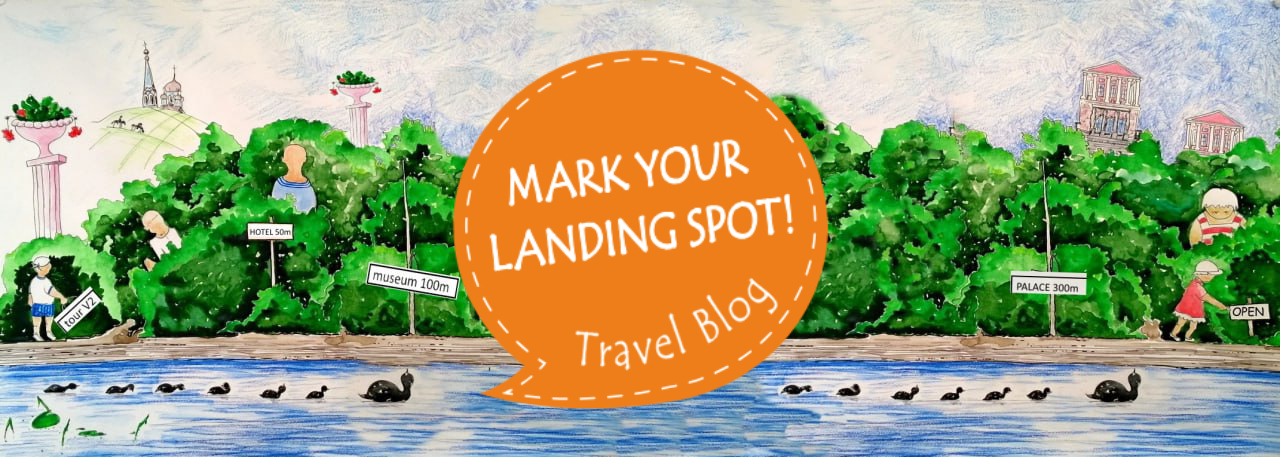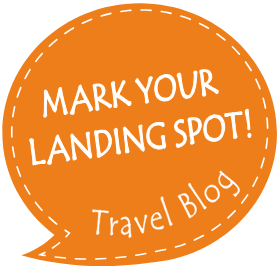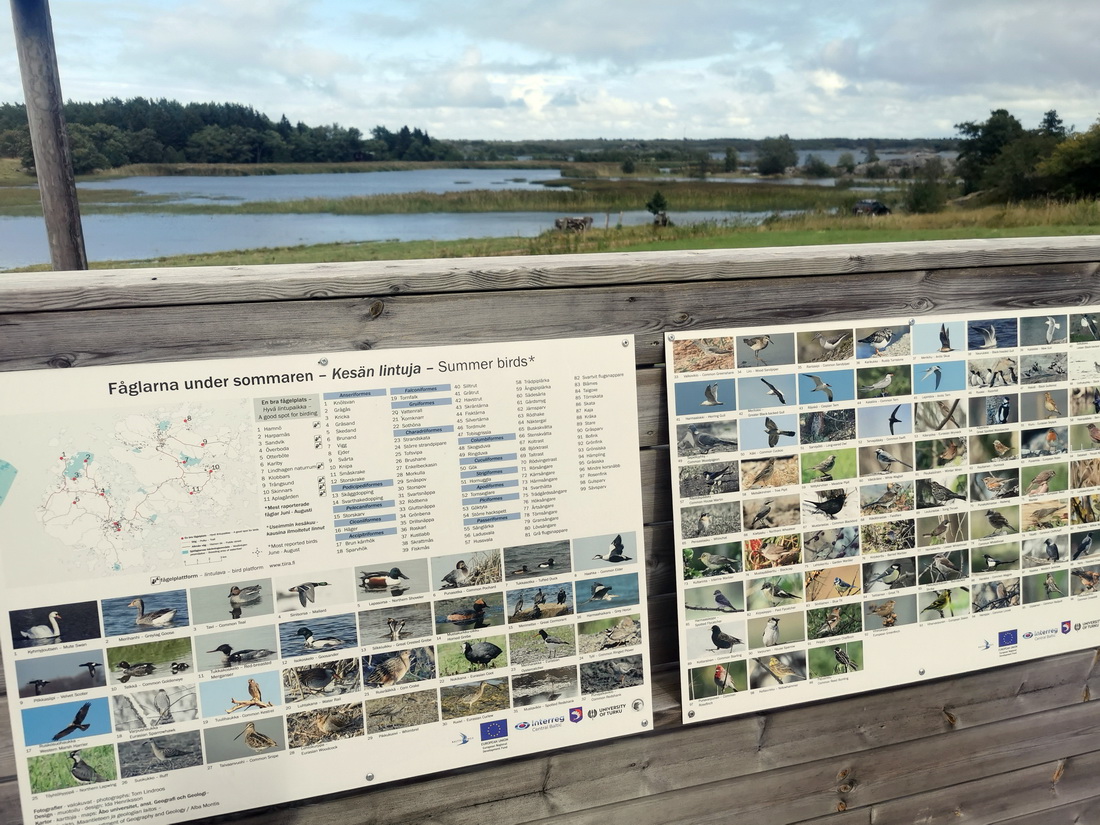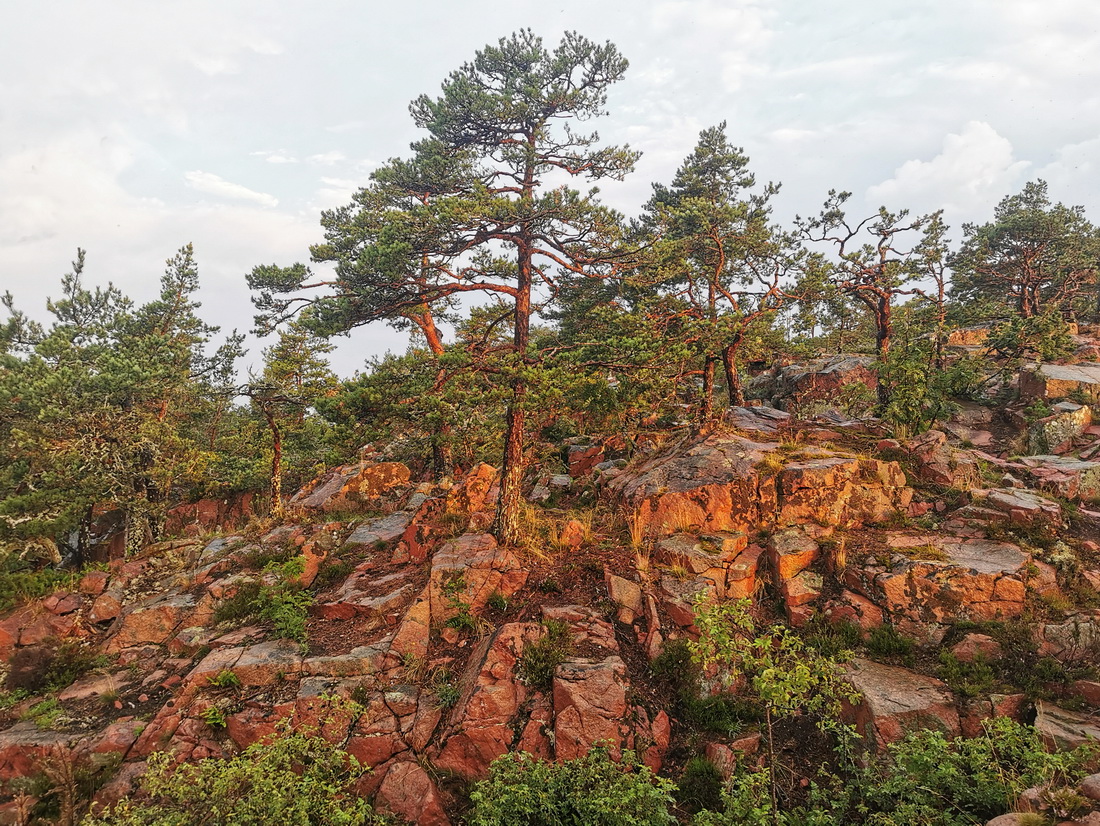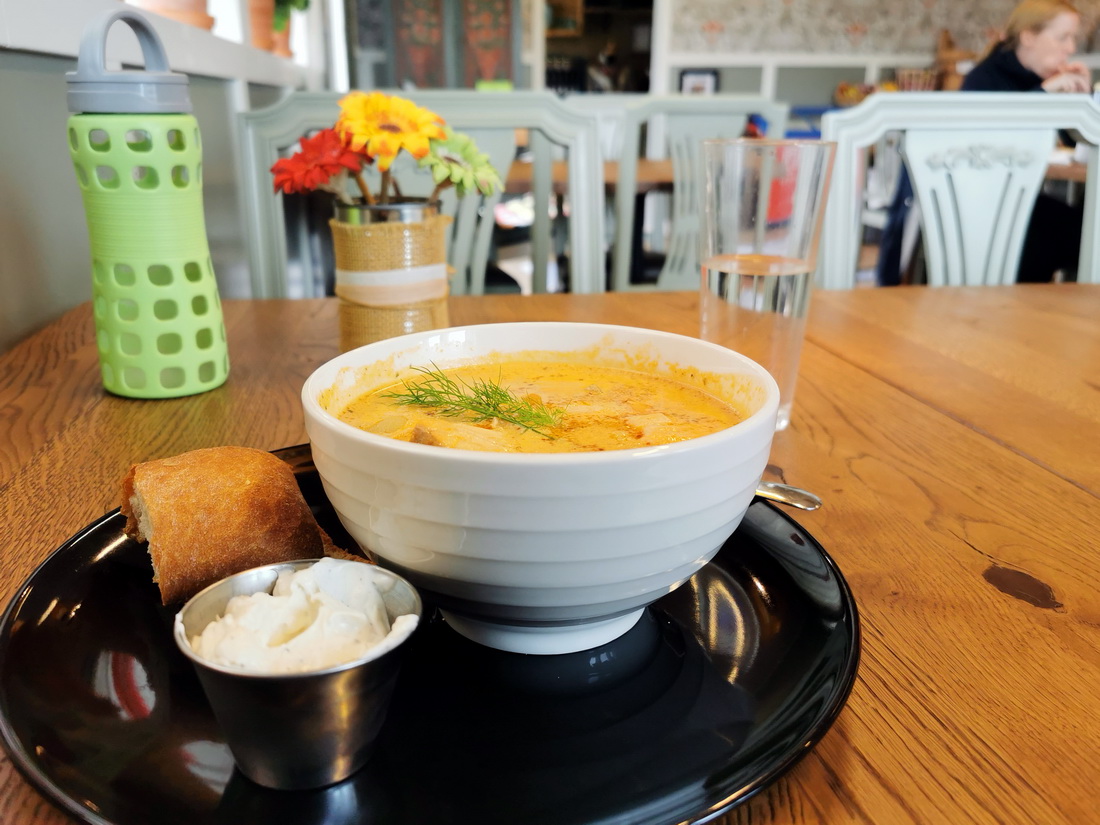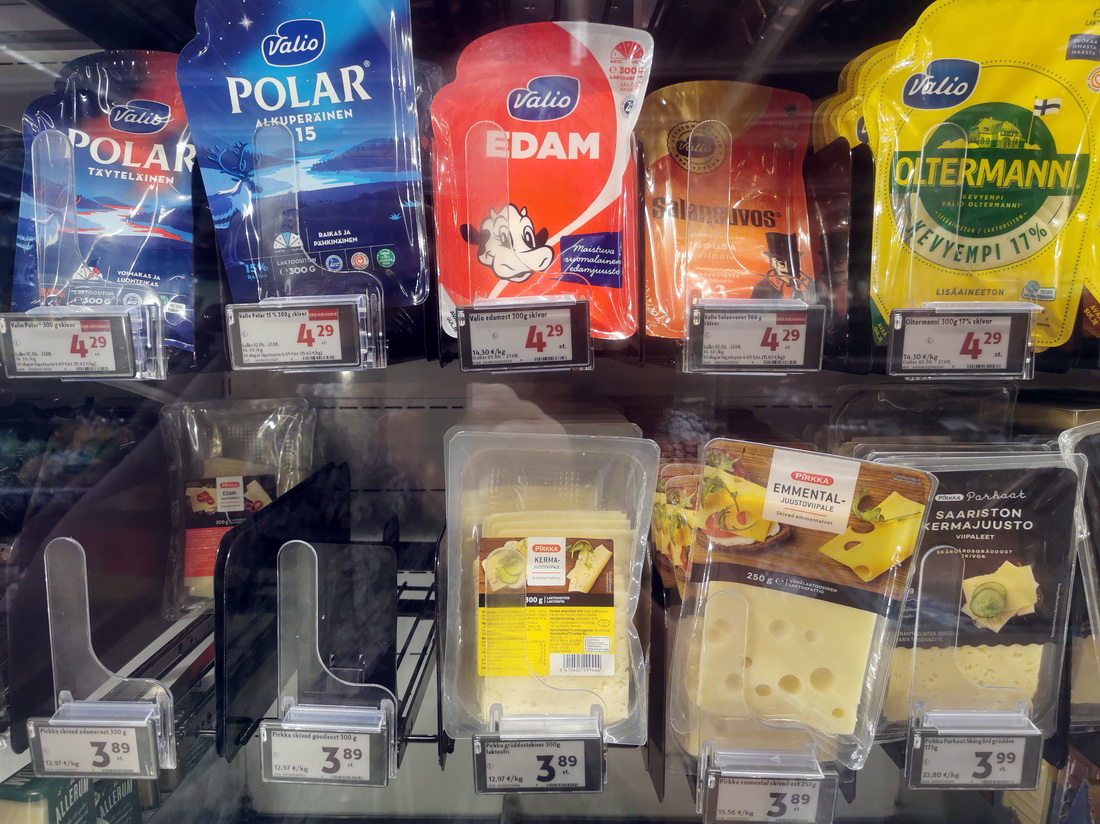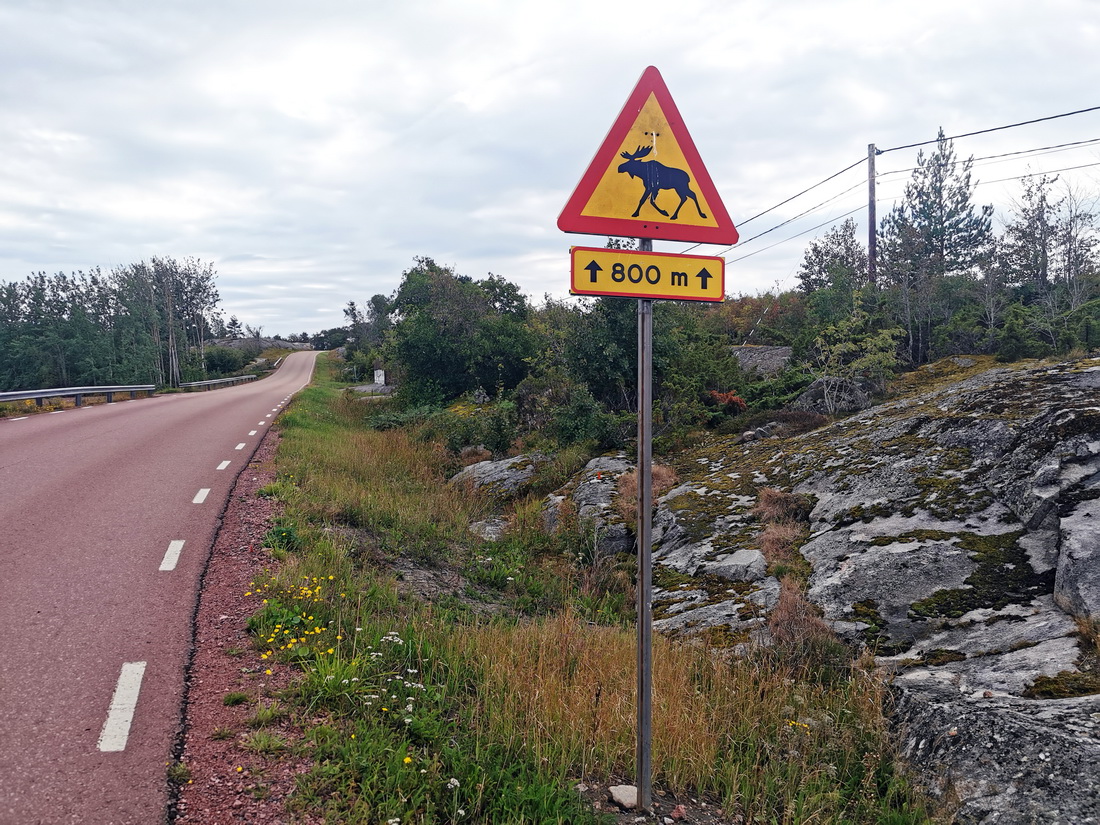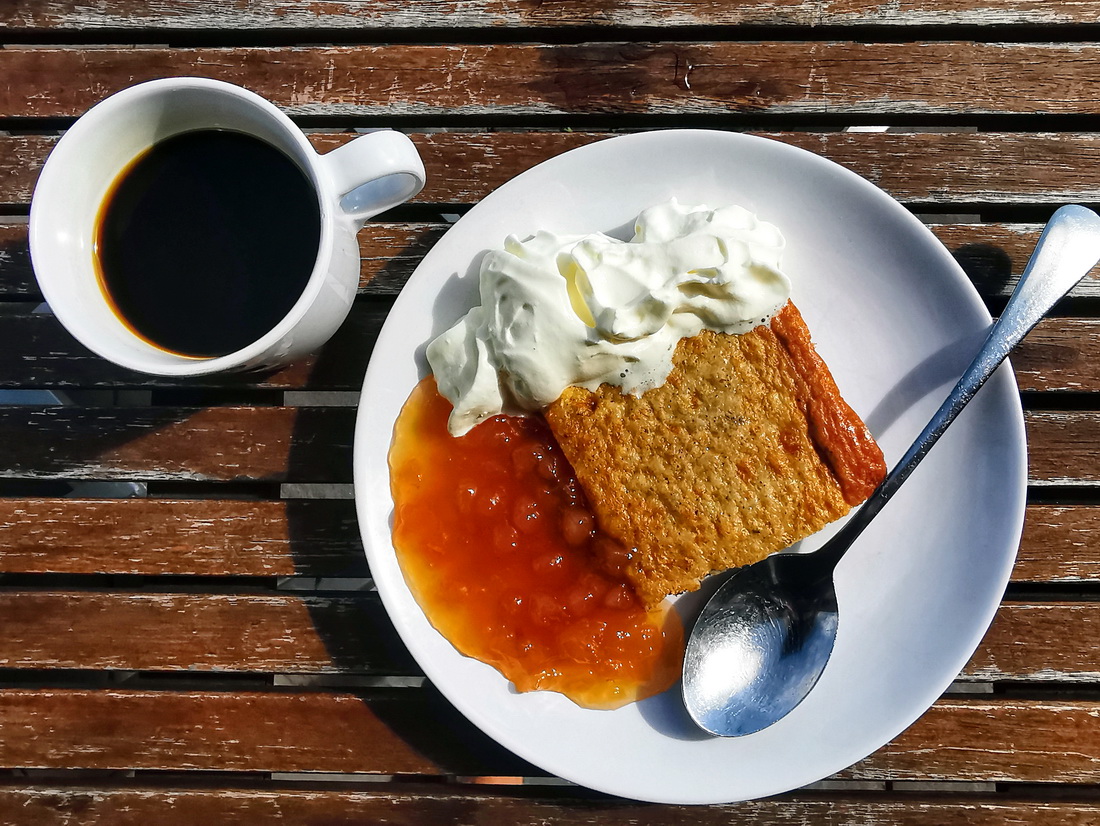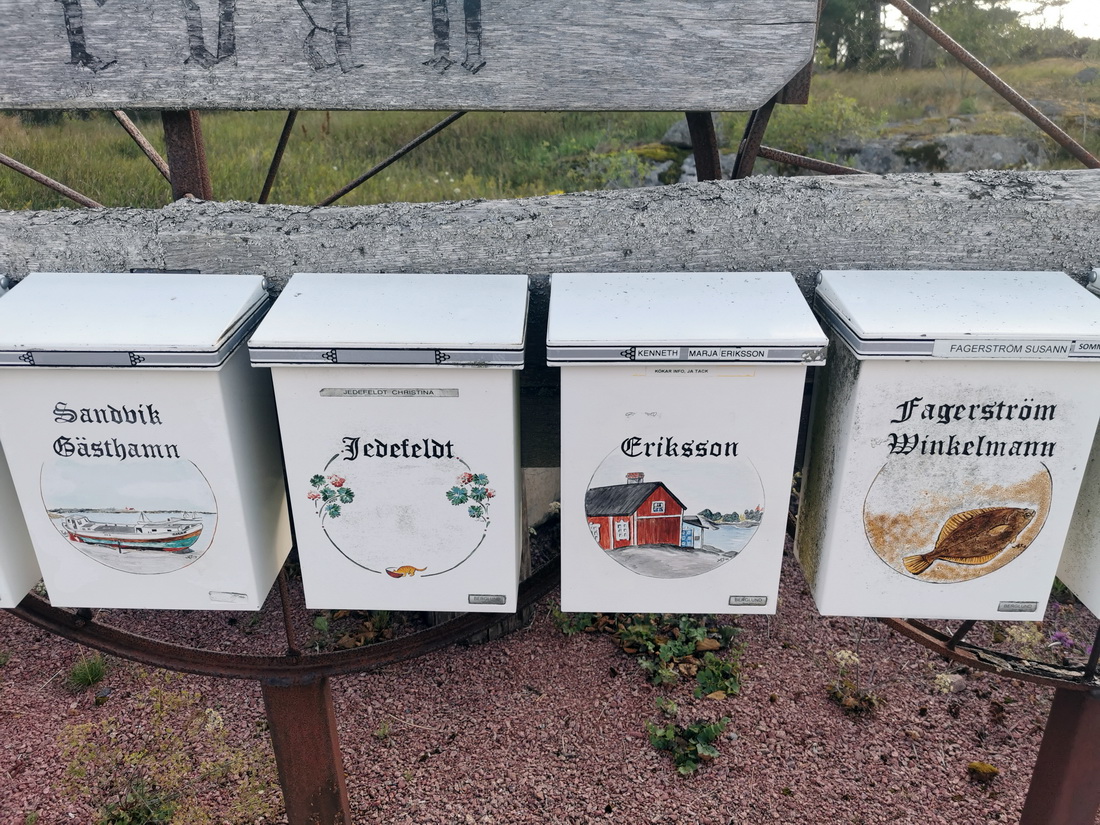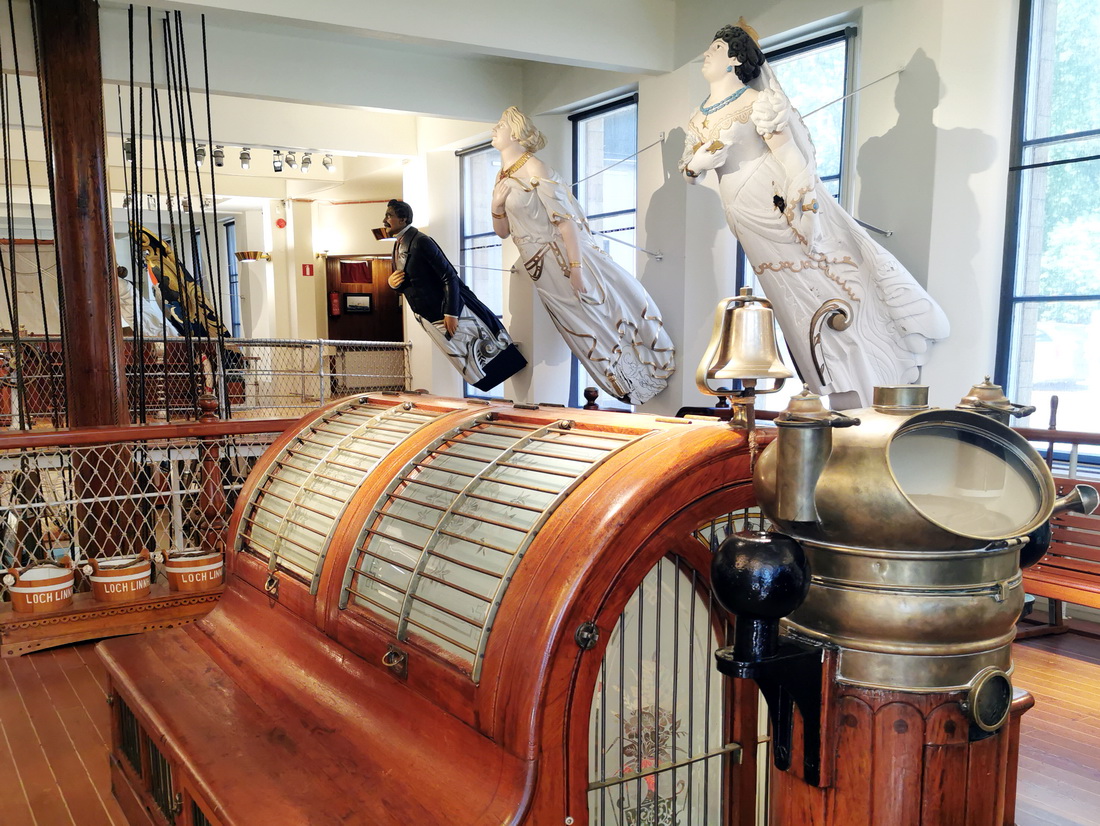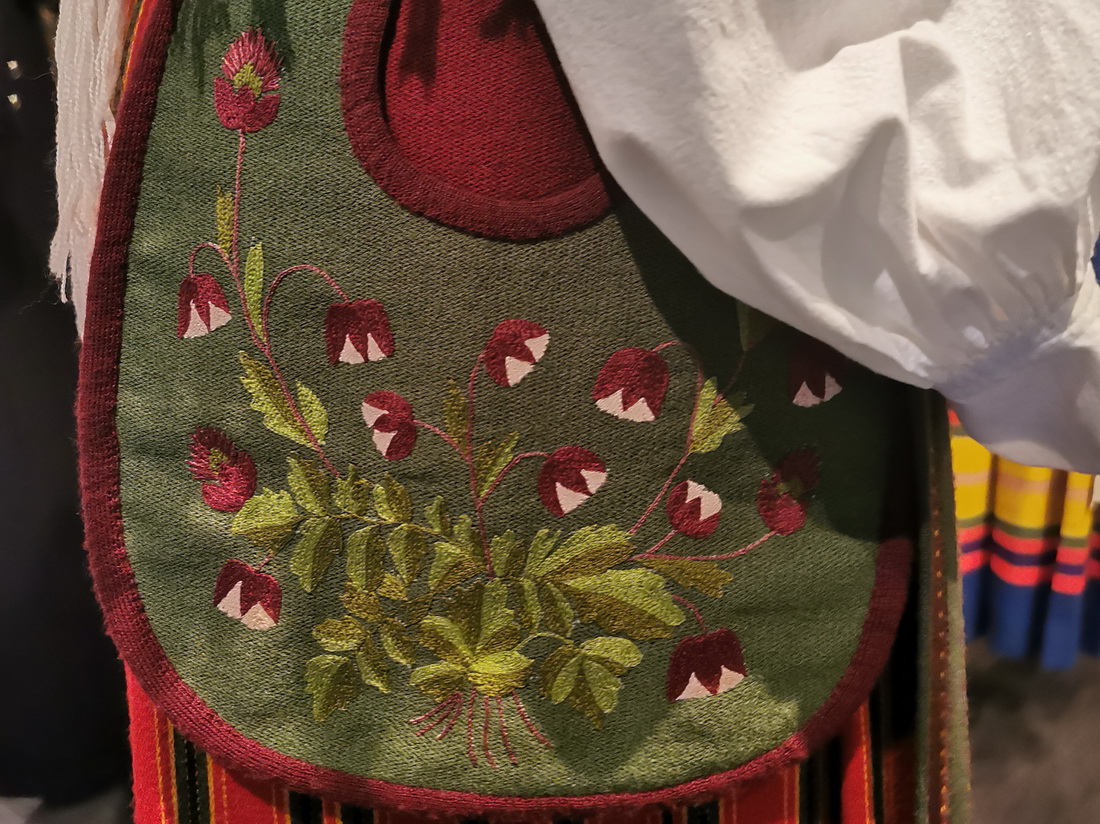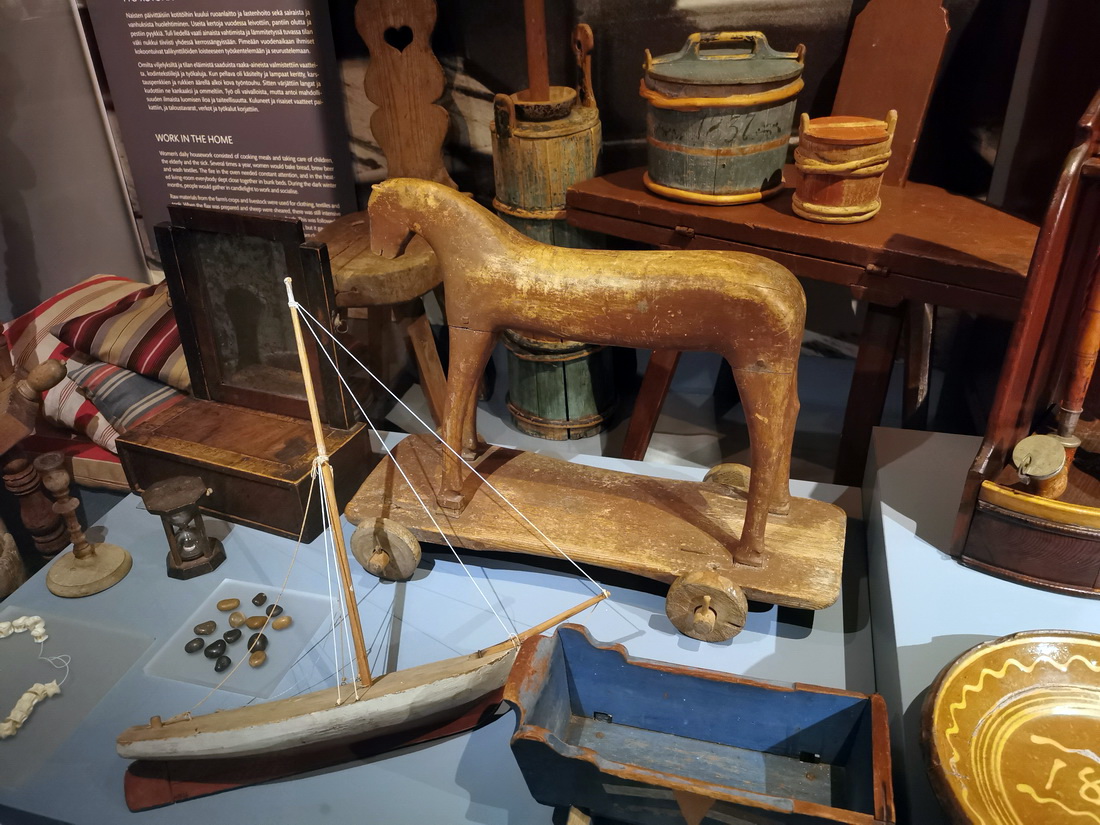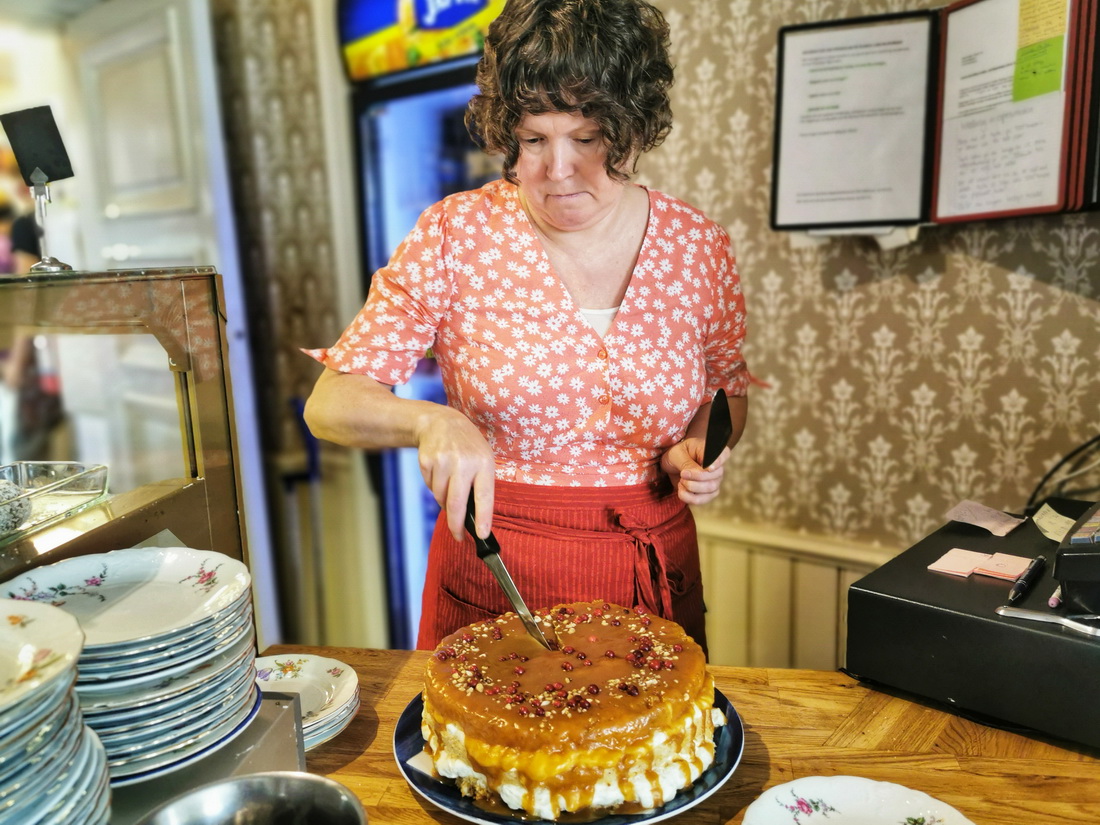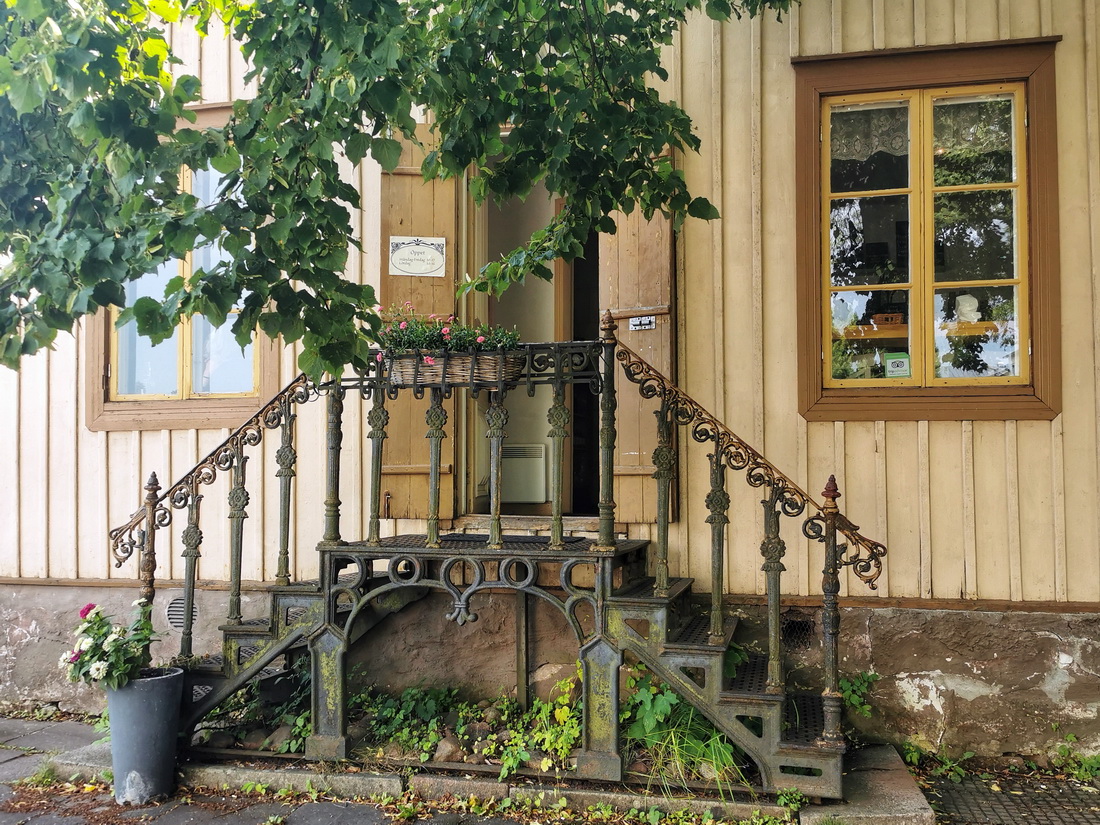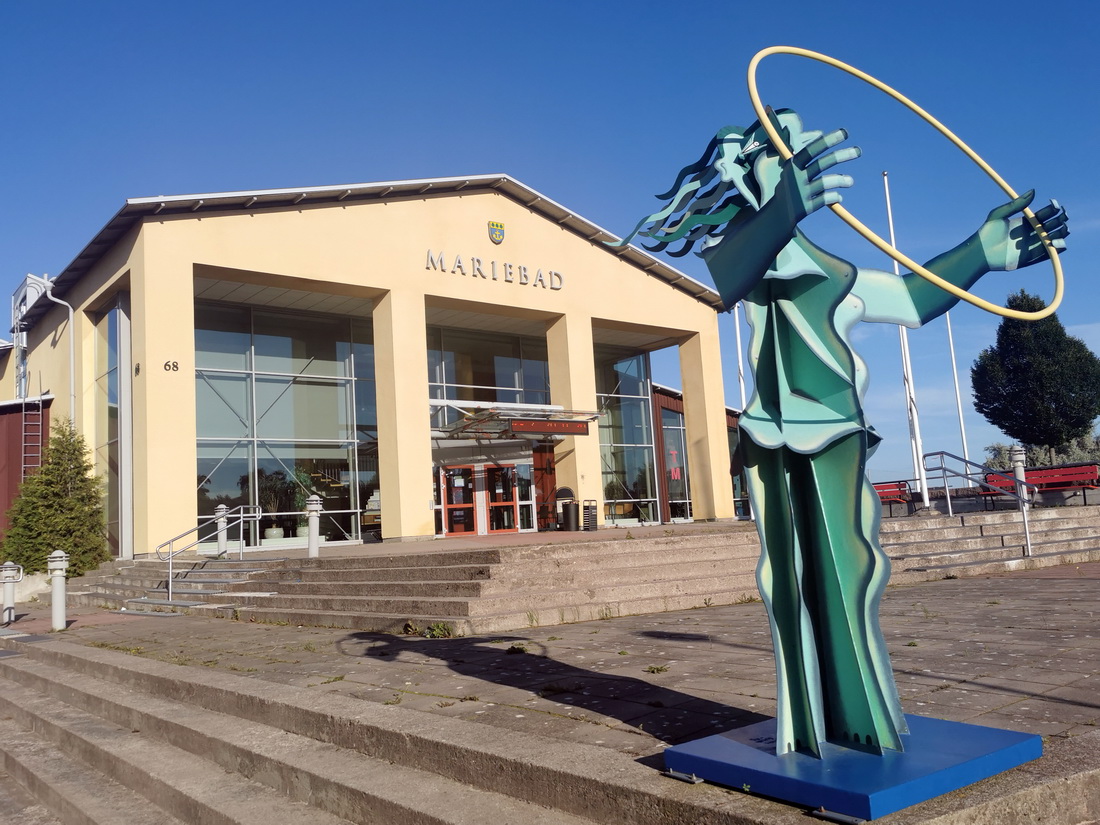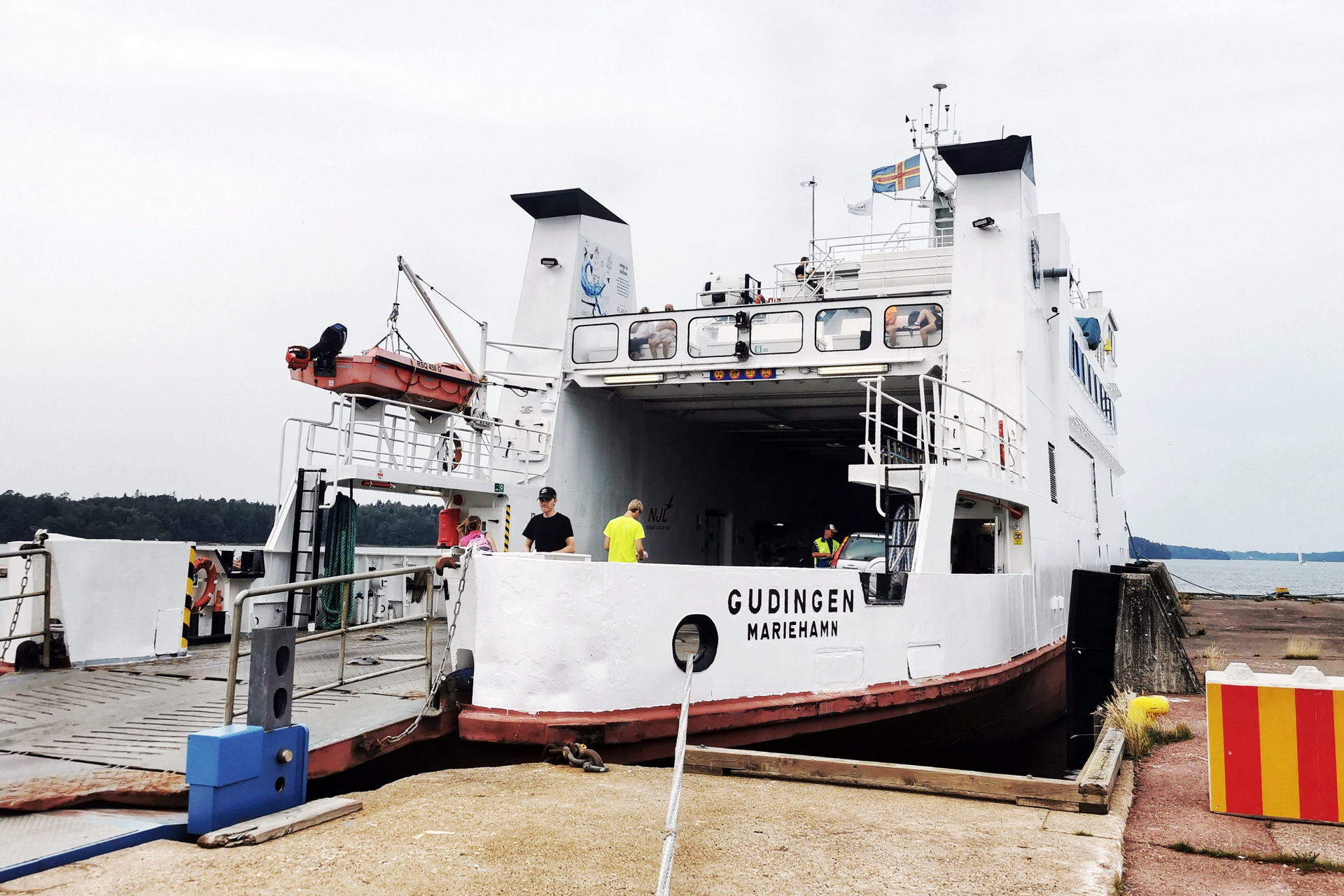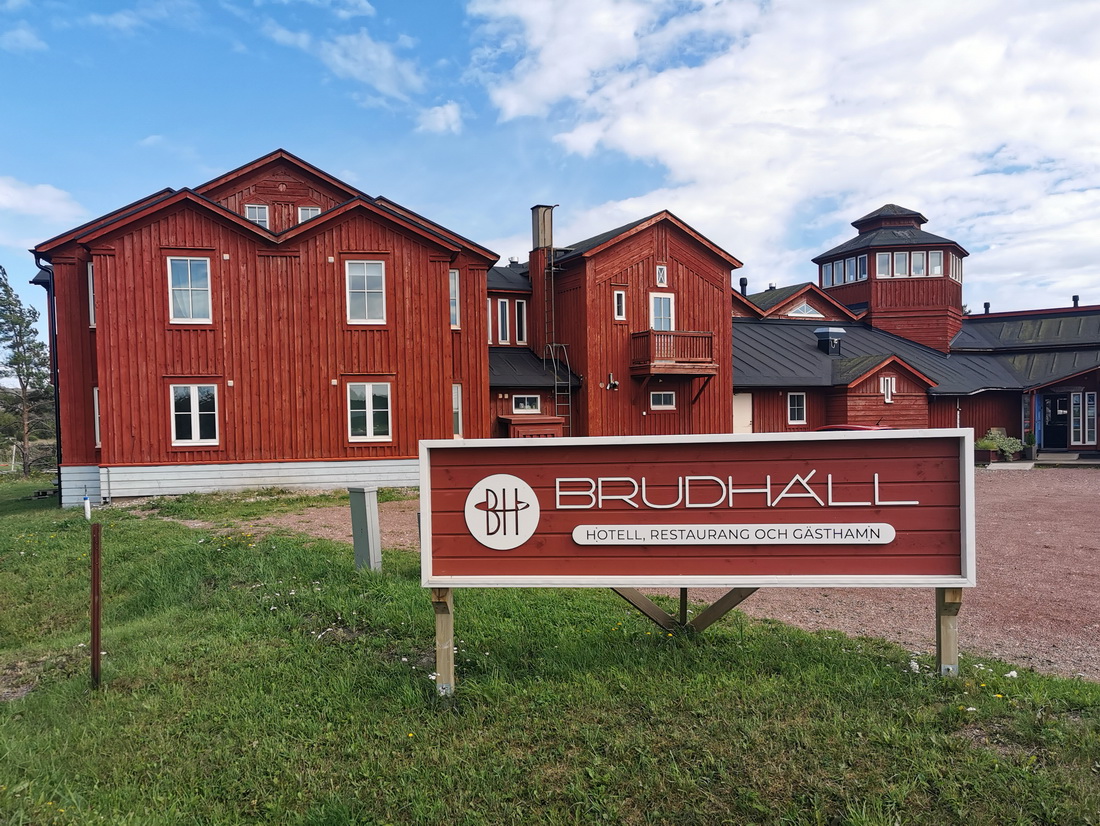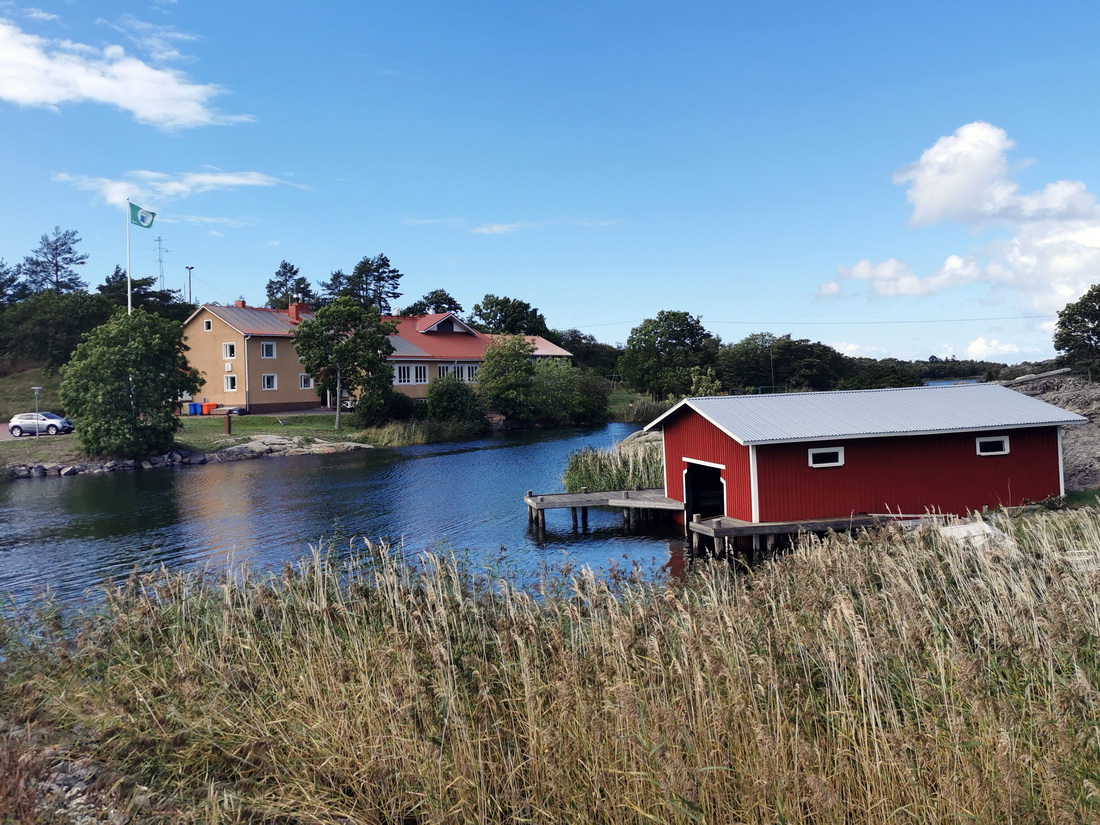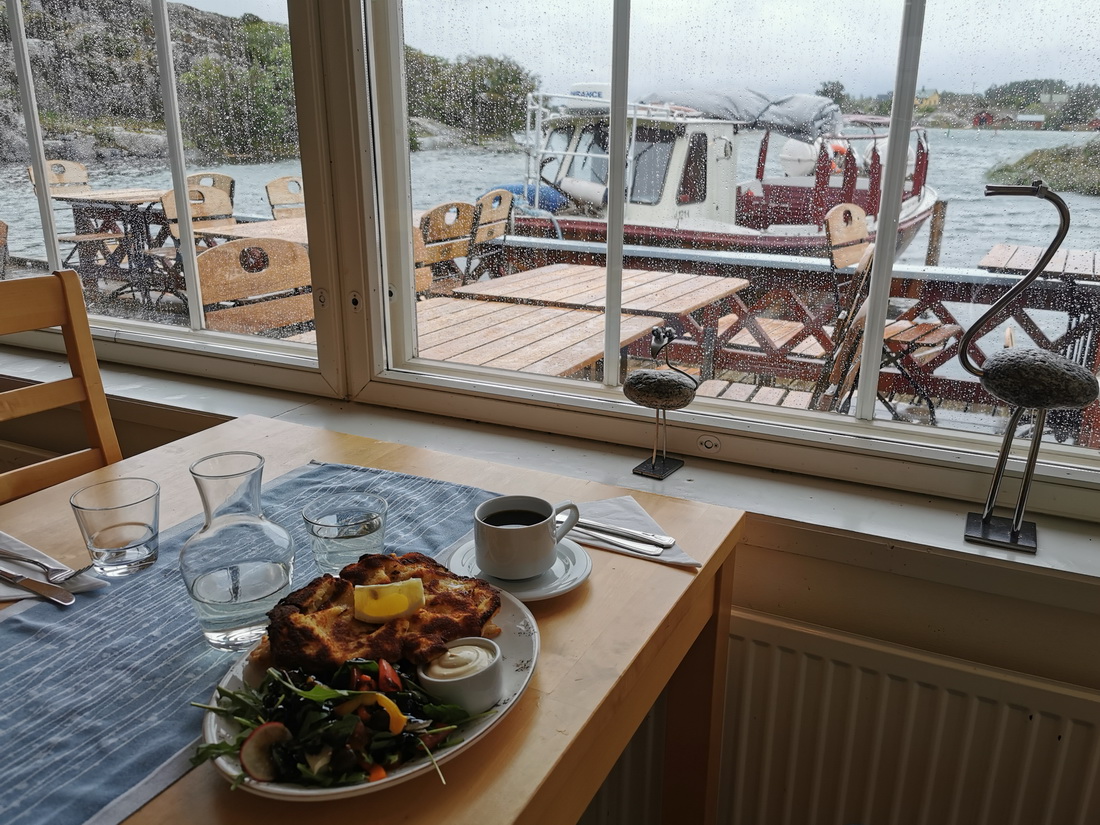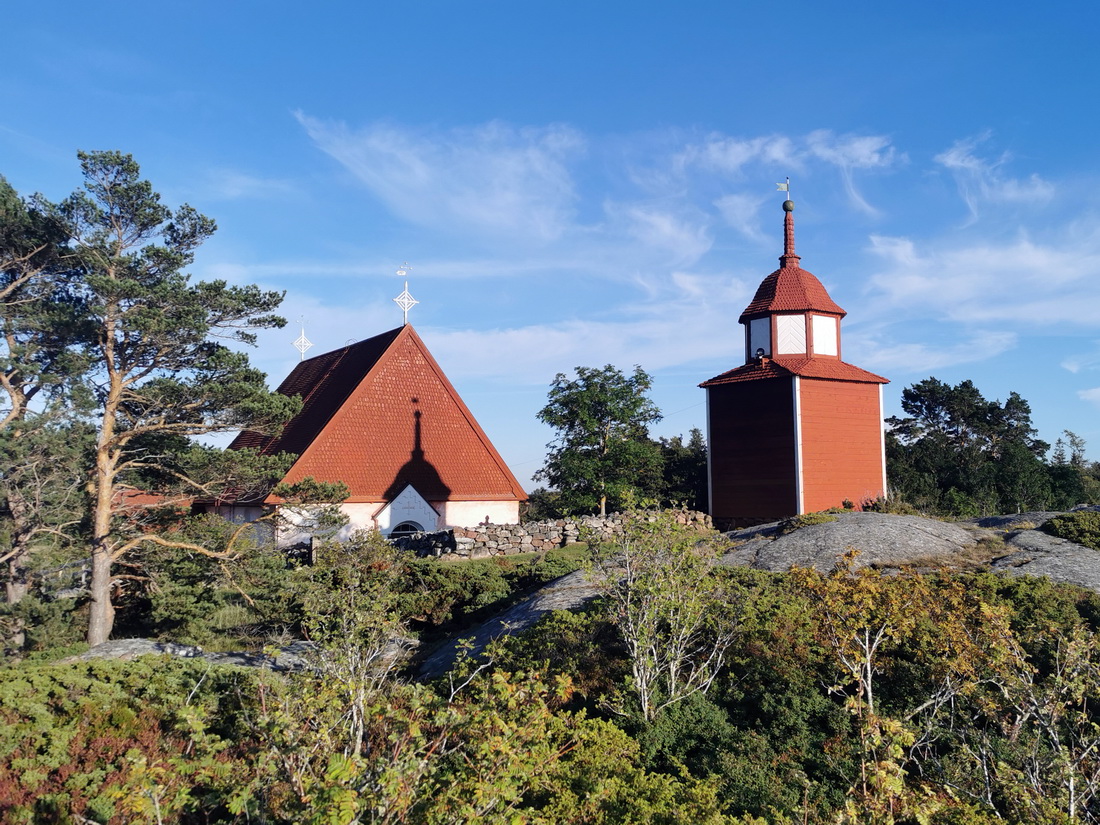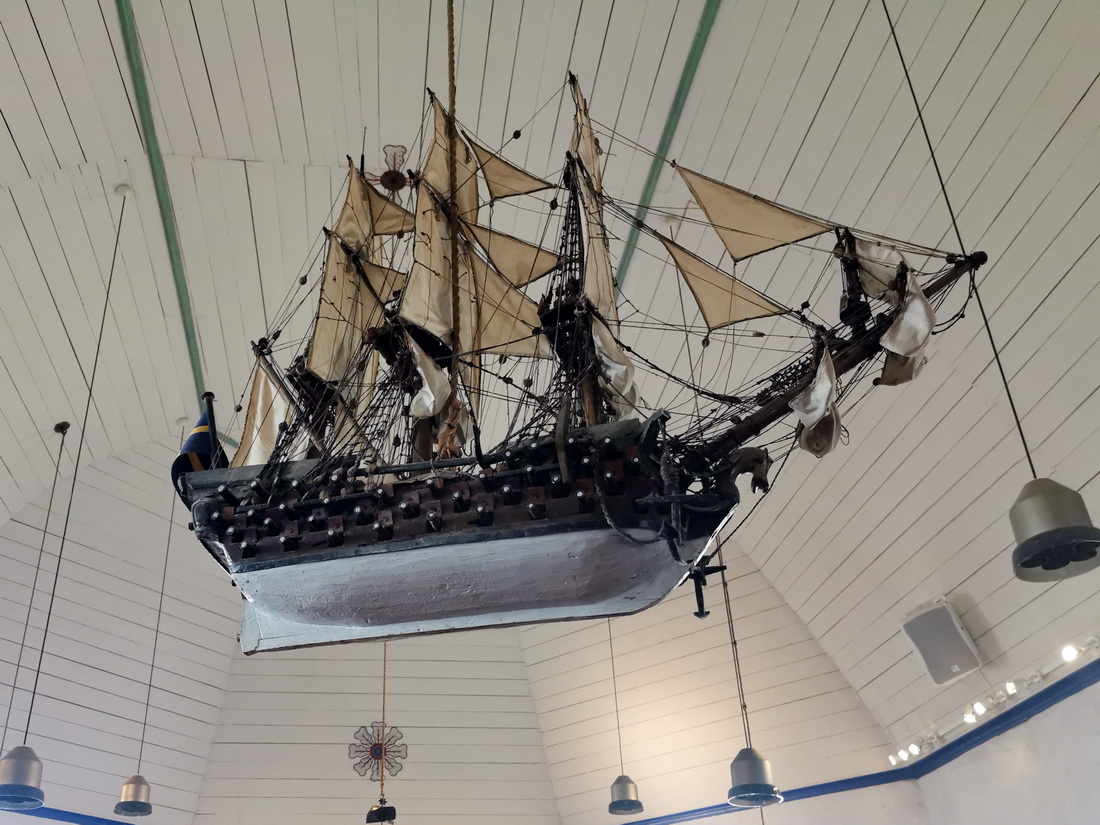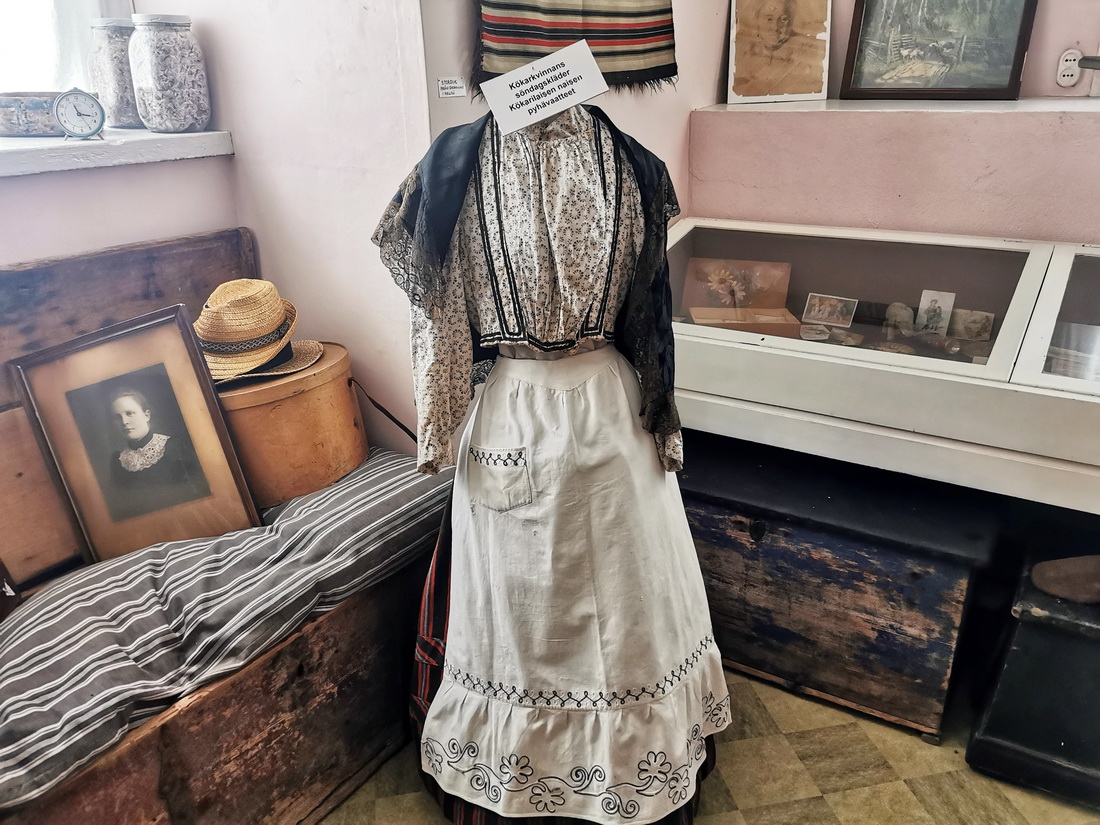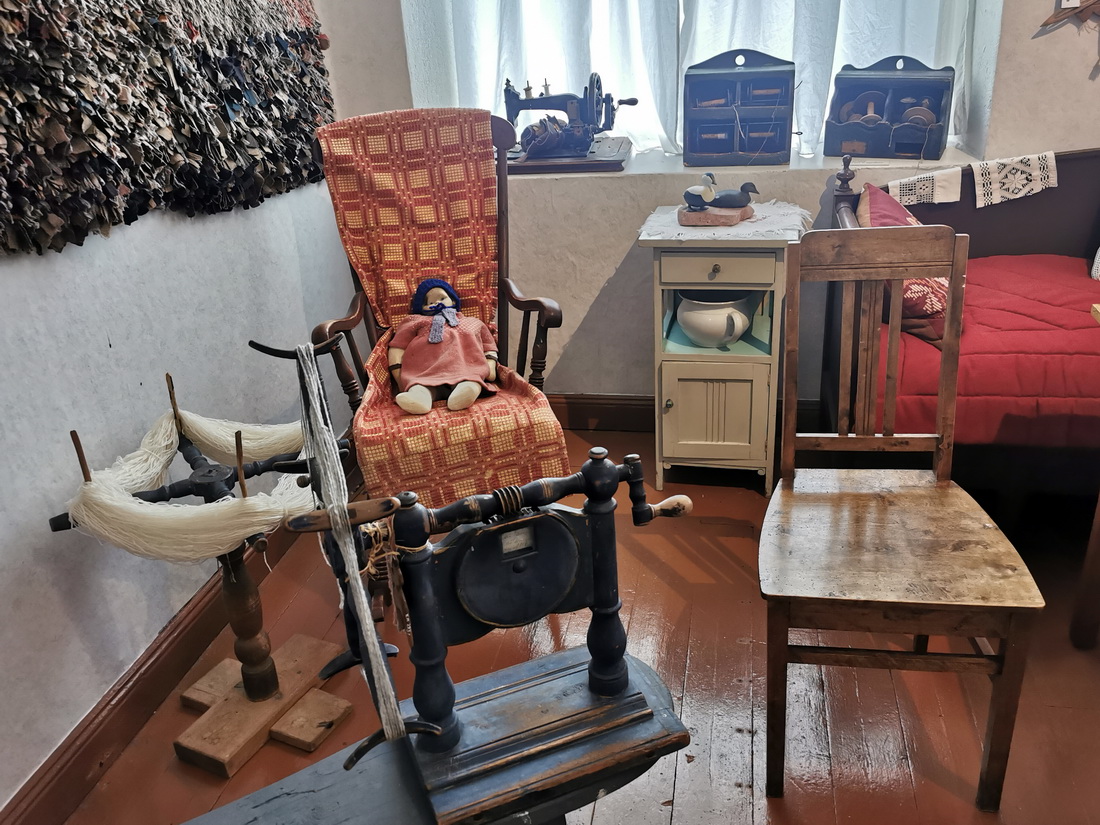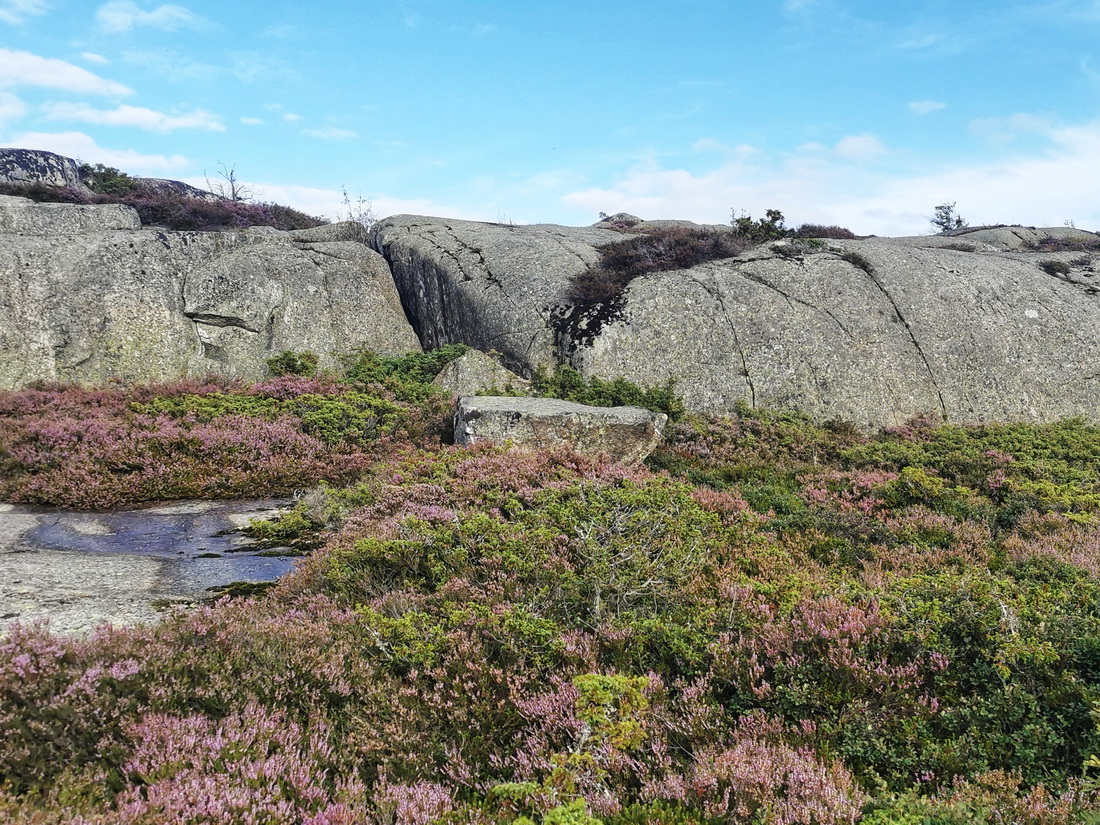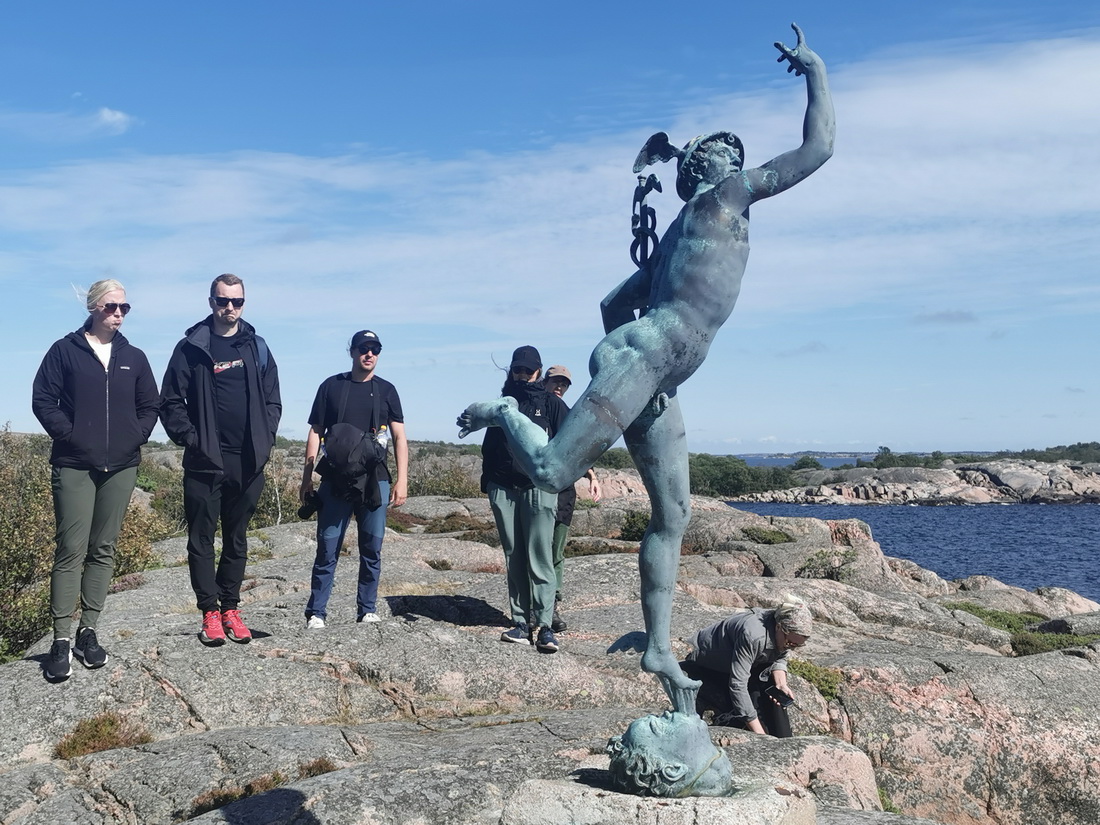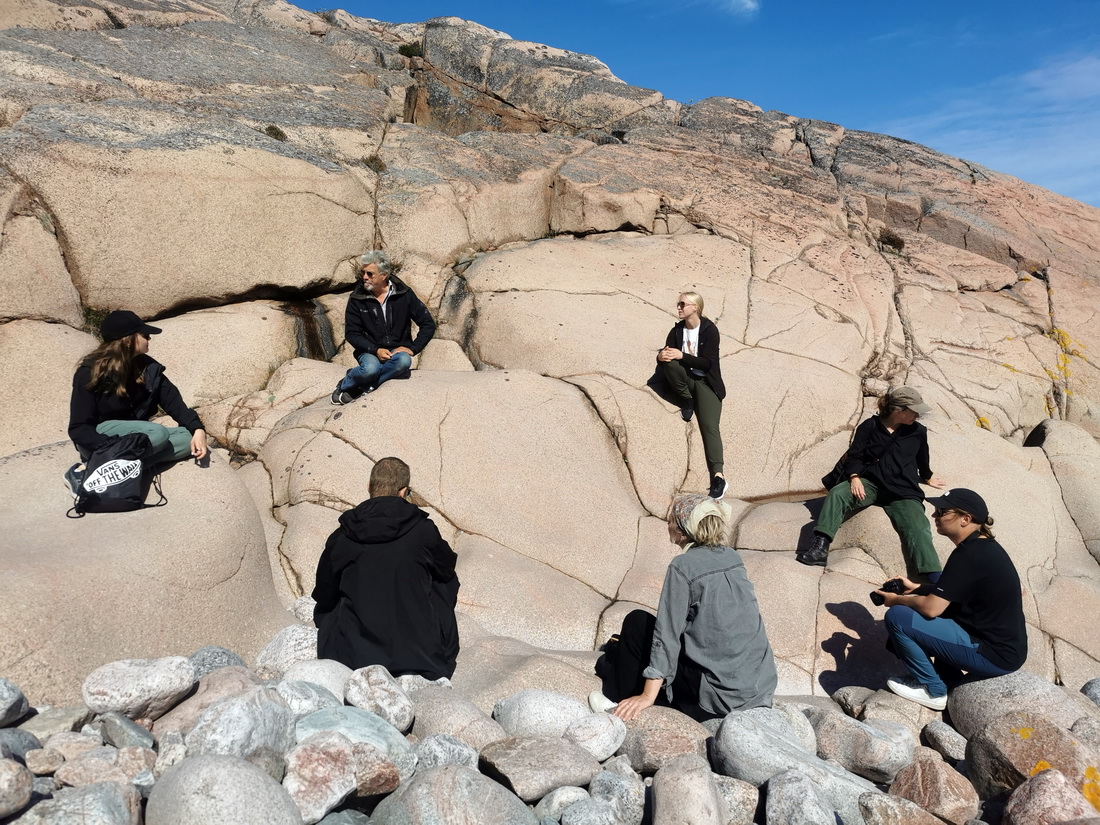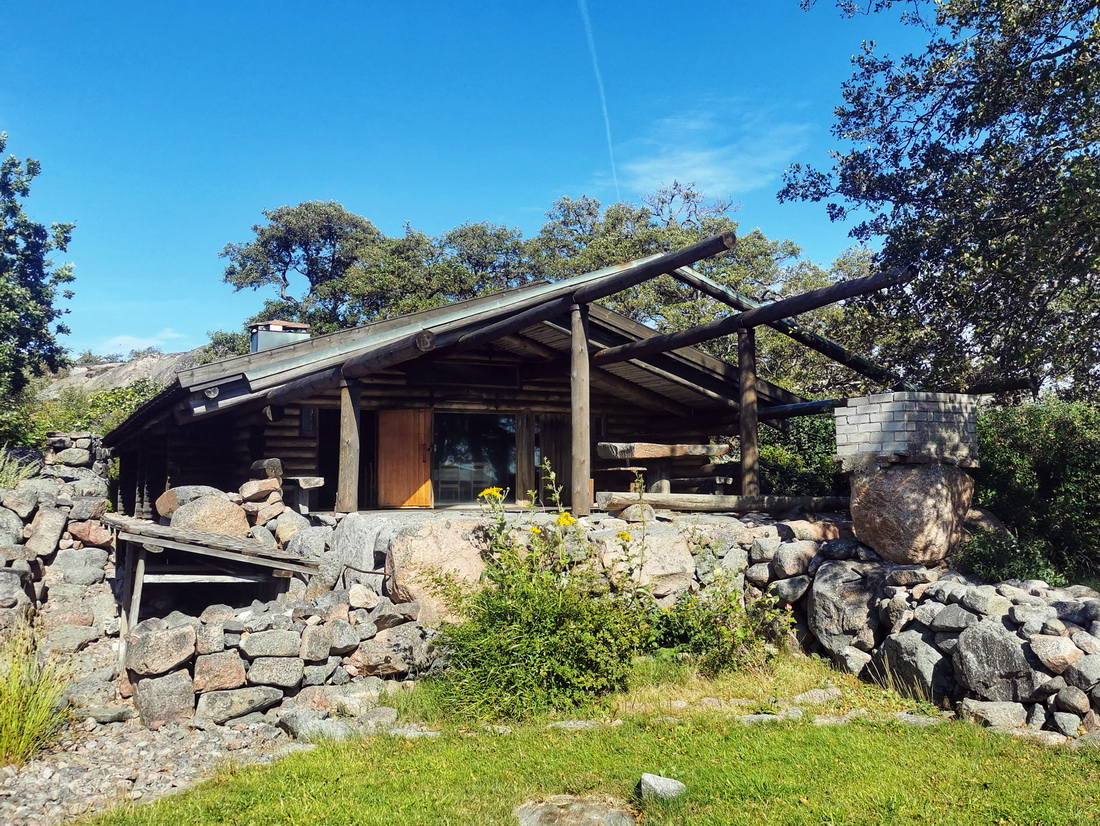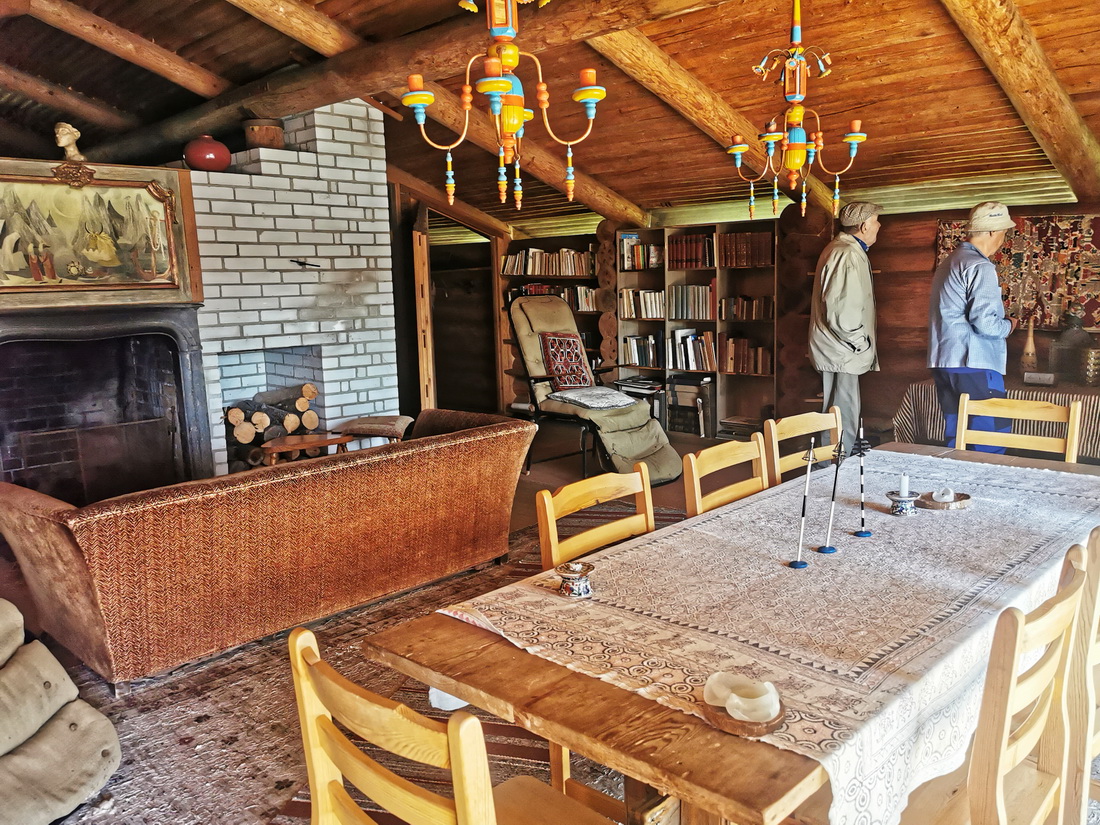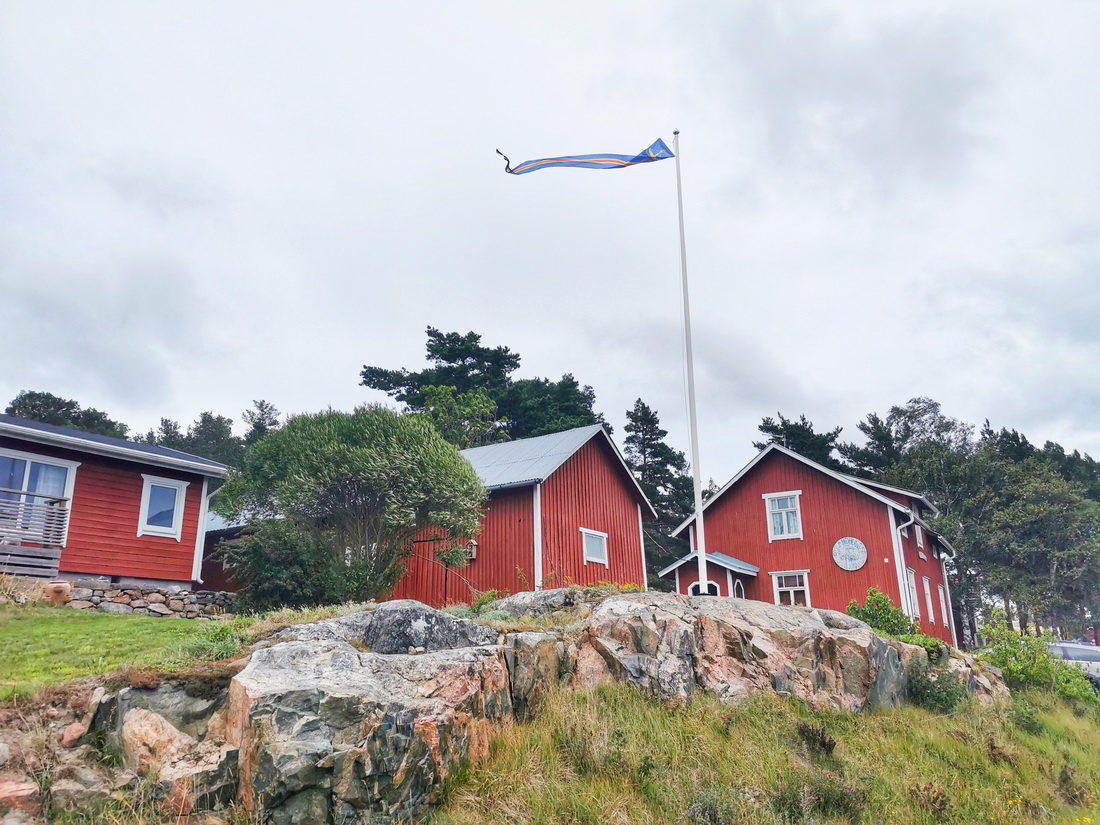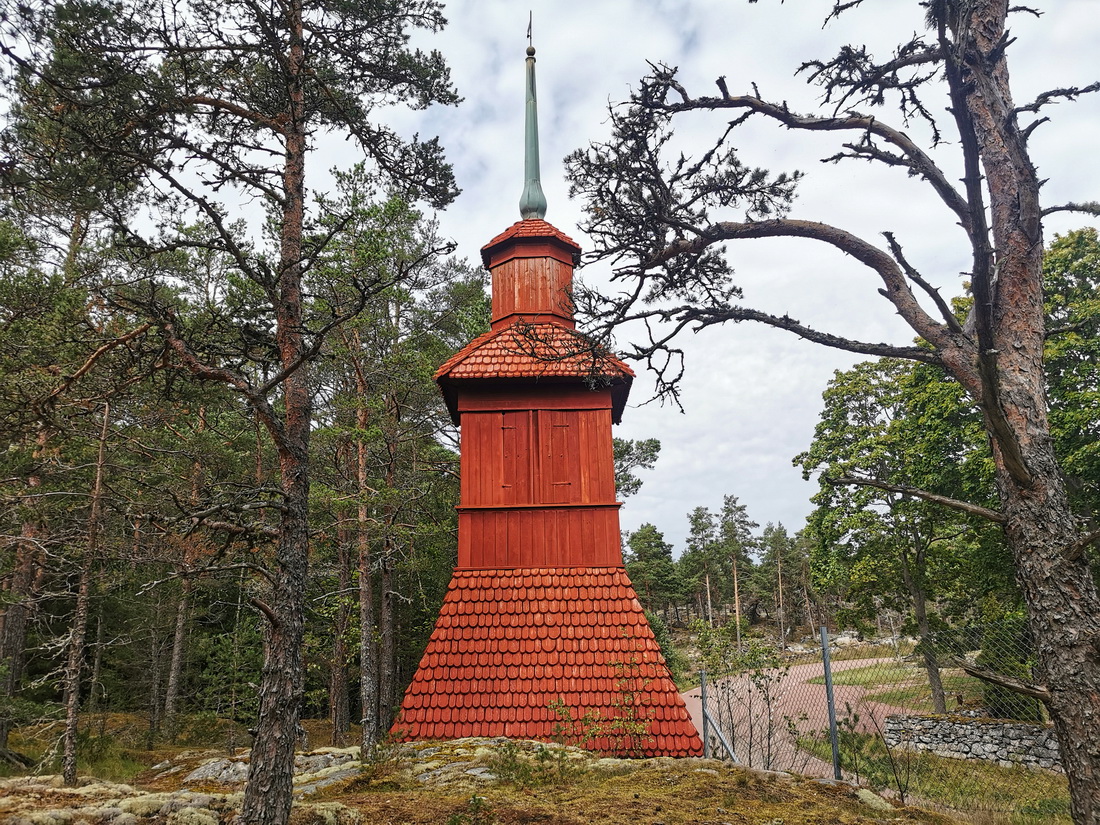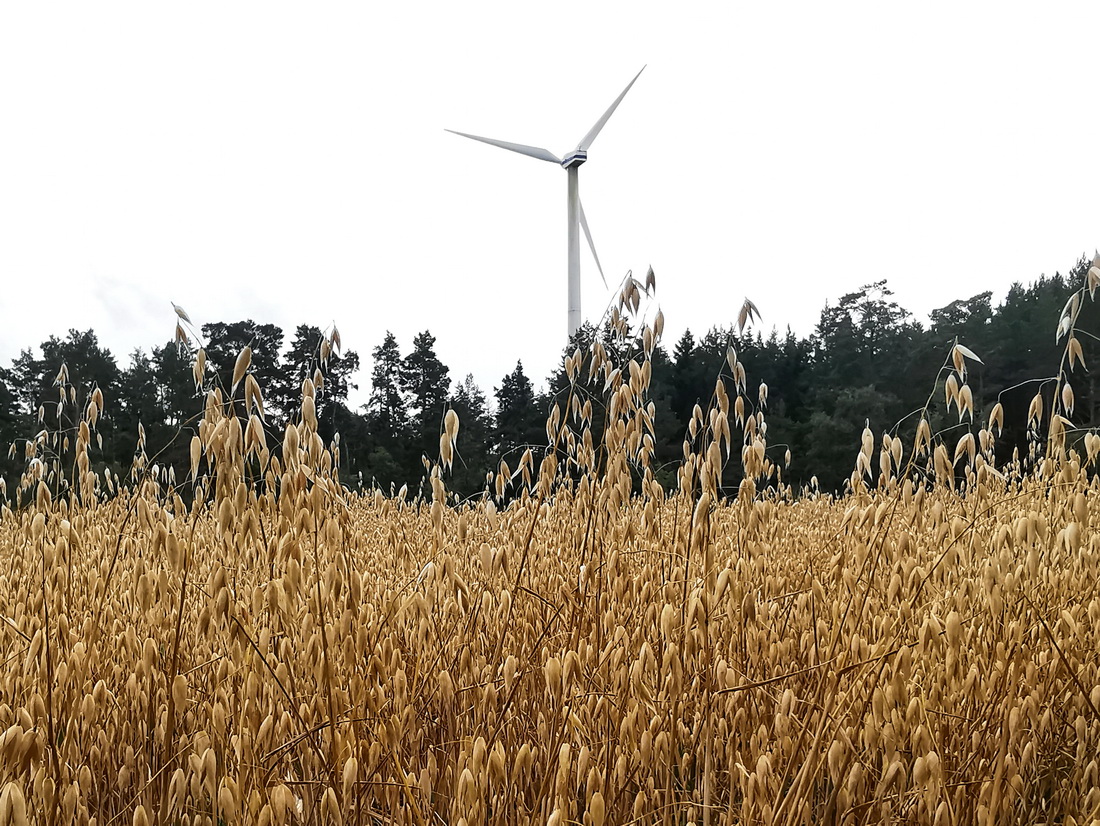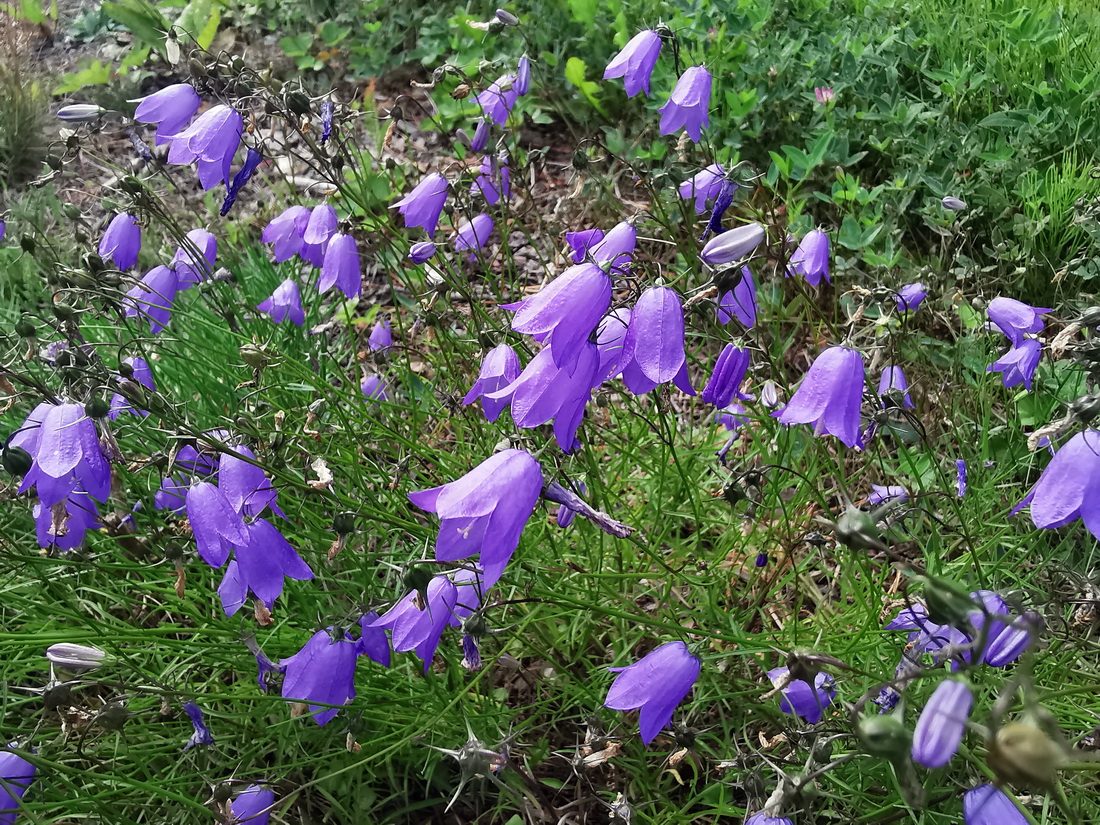The first thing you notice on the Åland Islands? The colour. Across villages and fields, red-painted wooden houses stand out against pine forests and granite shorelines. Not the bold red of Copenhagen rooftops or barn-house clichés — but the soft, weathered kind you only get after decades of sea wind and salt air.
Åland Islands in Brief
- An autonomous region of Finland, but Swedish-speaking. No drama, just a quirk of history.
- 6,757 islands. Most of them uninhabited. Even some of the inhabited ones feel… barely inhabited.
- Population: Around 30,000 humans, roughly the same number of seagulls.
This guide is for anyone curious about what the Åland Islands are really like — from where to stay and how to get around, to what things cost and how many pancakes you can reasonably eat in one week. I explored four islands and walked over 100 kilometres almost without noticing — that’s what happens when every trail looks like a postcard.
Whether you’re visiting for a few days or stretching your trip a bit longer, here’s everything you need to know to plan a smooth, memorable summer on the Åland Islands — ferries, forests, red houses, and all.
Where are the Åland Islands?
The Åland Islands are floating in the middle of the Baltic Sea, tucked between Sweden and Finland, right in the Gulf of Bothnia. Officially, they belong to Finland — but don’t expect them to feel very Finnish.
Åland has its own government, its own flag, and its own pace. And while Finland has two official languages, here on Åland, Swedish is the one that matters. Locals speak it, signs are in it, and even the place names feel more Stockholm than Helsinki.
They’re called Åland in Swedish and Ahvenanmaa in Finnish — you’ll see both on maps, but once you’re actually there, it’s Swedish through and through.
Best Things to Do in the Åland Islands
Åland has 6,757 islands. Only about 60 of them are inhabited, which means there are thousands of places to not run into anyone. Most people stay on the main island, and fair enough: it has everything you need. But the smaller islands? That’s where things get interesting. The more ferries you take, the more it starts to feel like you’re gently falling off the map — in a good way.
There are no “top 10 must-sees” here. The best way to experience Åland is just to settle into the island’s rhythm. Locals go about their day quietly — maybe fix a boat, bake something with apples, take the dog out, and finish with a sauna (always the sauna). No one’s in a rush. The shops close early. If you forgot your matches or milk, it’s not a crisis — it’s a reason to knock on someone’s door.
If you like nature, Åland will quietly spoil you. The islands are stitched together with pine forests, rocky beaches, and birds — so many birds. Some live here year-round, others just drop in on their way somewhere colder or warmer, depending on the season. Every walk becomes a small expedition (with a decent chance of getting stared down by a sheep).
And when islanders celebrate, they go all in. The Saltvik Viking Market is part historical reenactment, part cheerful chaos — expect swords, wool, and lots of mead. Midsummer Eve is something else entirely: flower crowns, maypole dancing, and a sun that refuses to go to bed. The line between tradition and party gets beautifully blurry.
Getting around is easy enough. Ferries and buses link the inhabited islands, and the rides themselves are part of the charm, especially if you like your public transport with sea spray, wind, and a wooden bench that may or may not be dry.
When to Visit the Åland Islands
The busiest months are June and July, with long days, warm nights, and landscapes bursting with flowers. Many visitors come specifically for Midsummer, celebrated between 20–26 June (dates vary yearly). This traditional Nordic festival includes outdoor dancing, wreath weaving, beer, and strawberries with cream.
Locals often recommend May—the perfect time for birdwatching, though the sea is still cold, and nights can be chilly.
The Åland Islands change dramatically by season — from the flower-filled Midsummer to the moody colors of October.
I visited in August, enjoying warm days and daily swims. Growing up by the Baltic Sea, I find 16–18°C water temperatures perfectly normal. I even spotted tiny northern jellyfish—completely harmless, just drifting peacefully in the clear water. The islands in August are breathtaking, with pink and lilac heather in full bloom.
During my trip, two days of severe storms brought an orange weather warning, restricting small boats but not affecting ferries. At night, the wind roared so loudly it felt like it could lift the roof, but for me, that’s nothing unusual.
From mid-September, the islands glow with yellow and red autumn colours, peaking late September to early October. But by then, rain is more frequent, days get shorter, and the air cools down.
What to Pack for the Åland Islands
- Umbrella or rain poncho – the weather can change quickly.
- Comfortable footwear – sandals for warm days, sneakers for walking.
- Swimsuit – for sea dips or the waterpark.
- Sauna hat or towel – to protect your head in the heat.
- Medications – pharmacies are only on larger islands.
- Insect repellent – works for mosquitoes and ticks.
- Some cash – handy for small museums, souvenirs, or places that don’t take cards.
Pack smart, and you’ll be ready for anything Åland throws your way!
What about Prices in Åland?
Åland is an archipelago, and bringing food and goods here isn’t easy. Unsurprisingly, prices are higher than on mainland Finland, and likely higher than in your country too.
Here’s what things cost during the summer 2024:
Supermarkets:
- 300g of edam or emmental cheese: 4.3 euros
- Sweet bun: 1.50 euros
- 1kg of basmati rice: 4 euros
- 500g of grapes: 2.90 euros
- 1kg of kiwi: 6.50 euros
- 1.5L of mineral water: 2 euros
Restaurants:
In Mariehamn, a main course in a regular restaurant costs 21–30 euros, while on smaller islands, it’s 15–20 euros. On Kökar, I had creamy salmon soup with bread for 15 euros and Åland pancakes with cream and jam for 6–7 euros.
Transport:
Ferries between inhabited islands are free for everyone (you pay only for cars or large vehicles). Buses on the main island are affordable: a ride from Mariehamn to Kastelholm Castle (20 km, 30 minutes) cost me just 2 euros.
Museums:
Museum tickets range from 4 to 12 euros, while a 4-hour guided tour (boat and on foot) costs about 45 euros.
Post:
Sending a postcard to Europe costs 2.50 euros for the stamp and 1.20 euros for the postcard itself.
Toilets:
I didn’t come across any paid toilets – a pleasant surprise!
Is It Safe to Visit the Åland Islands?
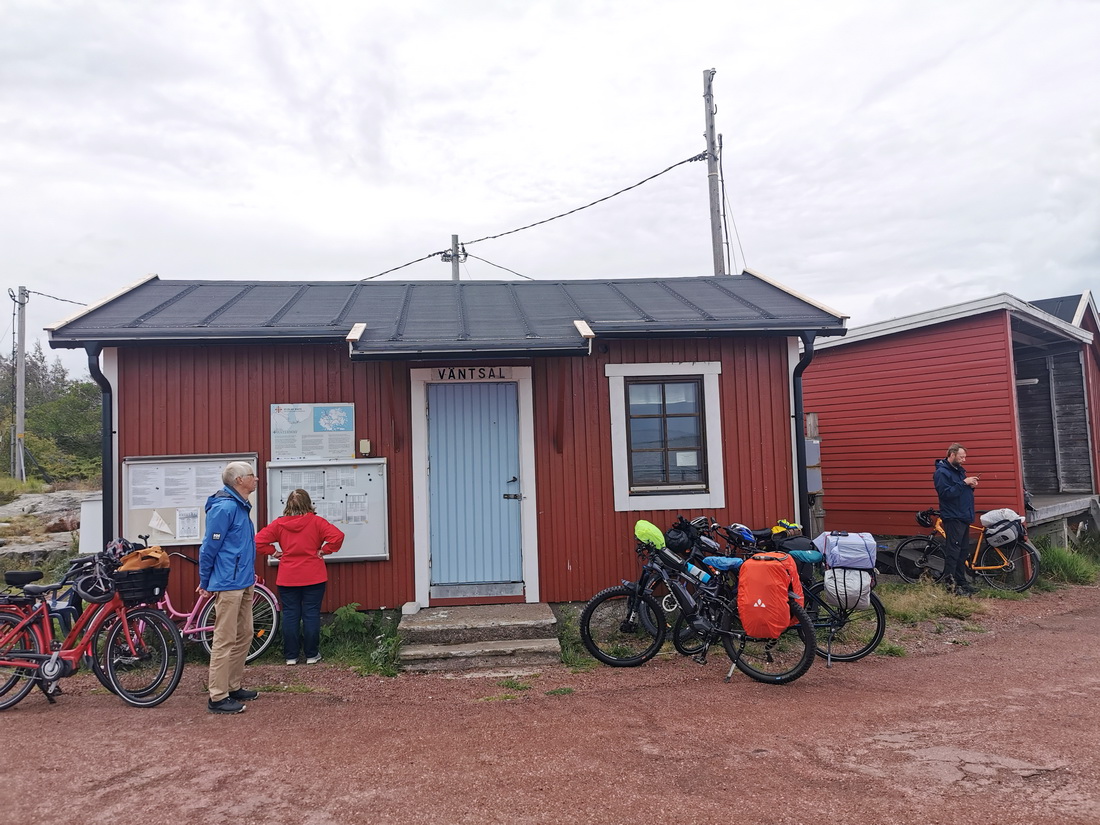
These little red waiting houses only show up on the bigger islands – on smaller ones, you’re on your own!
I travelled around the Åland Islands alone — ferries, forests, evening walks — and always felt completely safe. It’s a peaceful place. Still, a few safety tips never hurt.
Hiking
Trails are well-marked, and the forests aren’t exactly vast — hard to get properly lost. You might spot adders. They’re shy, but their bite can be dangerous if you’re allergic. Ticks are common too, so check yourself after walks.
Ferries
Visiting a smaller island for the day? Don’t miss the last ferry. Accommodation is limited, and even money won’t conjure up a spare bed.
Swimming
Stick to known beaches if you’re unsure — many spots have rocky bottoms, and toe-stubbing is easy. In summer, you might see tiny jellyfish. Don’t worry — they’re harmless and kind of pretty, just drifting by.
Cycling
Åland is made for bikes. There are bike paths on the main island, almost no hills, and little traffic elsewhere.
Travelling with children
Åland is very family-friendly. Short distances, kind people, and nature everywhere. But some trails are uneven, and smaller islands might lack baby-changing facilities or playgrounds.
English in the Åland Islands: What to Expect
Yes — and surprisingly well. The local language is a Swedish dialect spoken by about 95% of the population, but most people (especially anyone in tourism) speak English fluently and are happy to help.
That said, you might still hit a few language snags. Menus in small cafés, signs in local museums, and ferry notices are often only in Swedish.
One thing to watch out for: place names. Some of them can be tricky to pronounce — and if you say them wrong, locals might genuinely not understand what you’re asking. Take Kökar, for example. It’s not “Ko-kar.” It’s closer to “Chuh-kar.” Say it wrong, and you might end up on the wrong island entirely.
How to Get to the Åland Islands
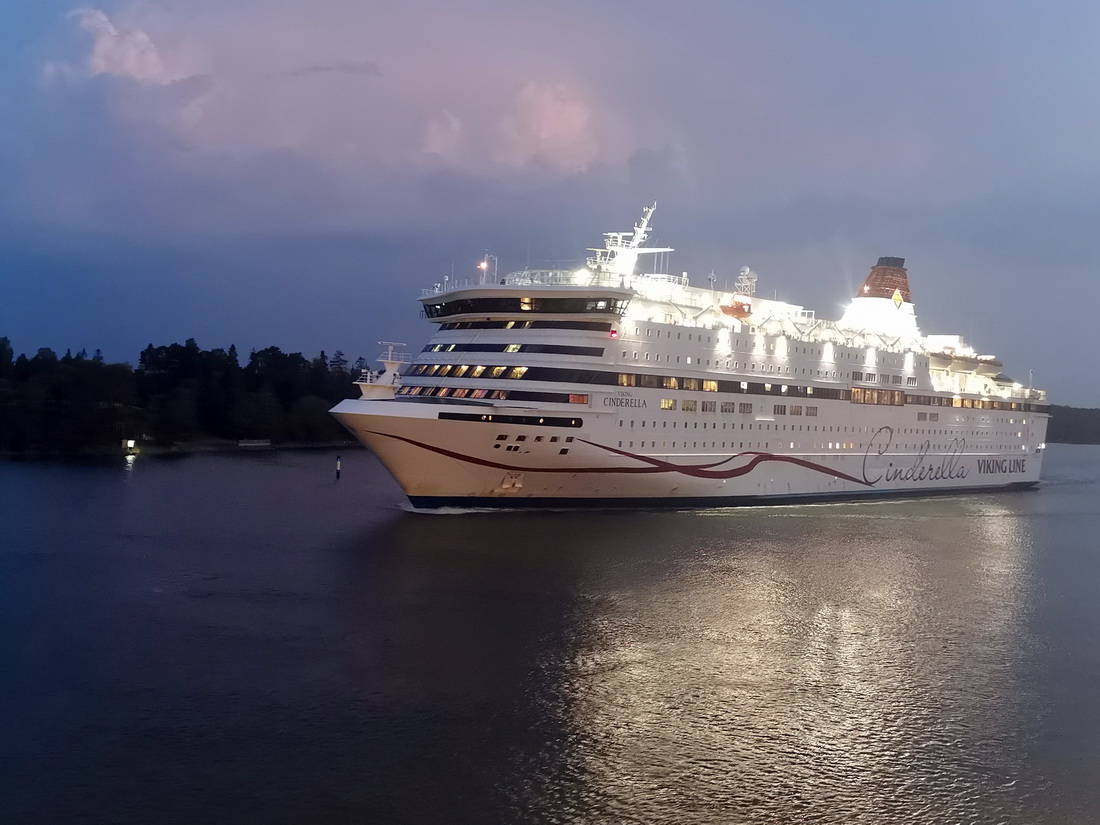
A Viking Line Cinderella ferry docking in Åland. Only 20–30 people usually step off big ferries here.
Reaching Åland is easy, but the best route depends on where you’re coming from. You can fly or take a ferry, with options from Finland, Sweden, and Estonia.
By Plane
Fly with Finnair or Amapola Flyg from Helsinki, Turku, or Stockholm. The only airport is in Mariehamn, just 3 km from the city.
By Ferry
1) Free Local Ferries from Turku (Finland)
Åland’s regional ferries are free for passengers, but if you’re bringing a car, you’ll need to book and pay in advance (discounts apply for pre-booking). The ferries have both open and closed decks, a restaurant (coffee €2, a large sandwich €7), and toilets. You can check schedules and book tickets on the official Ålandstrafiken website.
- South Line (Södra linjen): Galtby → Långnäs
- North Line (Norra linjen): Osnäs → Åva + Torsholma → Hummelvik (if you’re driving)
Suitcases can be left on racks at the ferry entrance to avoid carrying them upstairs.
2) Large Paid Ferries from Turku
A more direct option is taking a Viking Line or Tallink ferry from Turku:
- Viking Line departs near Linnansatama, close to Turku Castle.
- Tallink also departs from Turku but arrives in Långnäs (20 km from Mariehamn).
If you’re travelling around Finland, stopping in Turku before heading to Åland is a great idea. I came from Tallinn, and for me, the next option turned out to be the best.
3) Ferries from Tallinn, Stockholm, and Helsinki
Mariehamn is a stop on the Tallink and Viking Line routes between Stockholm, Tallinn, and Helsinki. Check their websites for schedules and tickets.
One downside? Ferries often arrive at night or early morning. For example, I arrived on a Tallink ferry at 04:50. The idea of arriving at such an hour put me off for a long time, but in the end, the trip was comfortable—and watching the sunrise in Mariehamn was unforgettable.
Boarding in Tallinn: What to Expect
I departed from the Tallink terminal in Tallinn, and if you’re doing the same, here’s what you need to know:
- Arrive at least 45 minutes before departure. For example, if your ferry leaves at 18:00, be there by 17:15 or earlier.
- Check-in is done at self-service kiosks, which print your boarding pass with your cabin number. The first digit tells you which deck it’s on.
- From there, you’ll walk through a long corridor to board the ferry and head straight to your cabin.
Arriving in Mariehamn at Night – Is There a Terminal and Luggage Storage?
Yes, there is! The Mariehamn ferry terminal is small but functional. It has plenty of seating, a coffee vending machine, restrooms, and automatic luggage storage.
Terminal Opening Hours (2024)
Monday to Friday: 03:30–16:15* and 22:00**–01:00
Saturday to Sunday: 03:30–15:00 and 22:00**–01:00
*On Tuesdays, Wednesdays, and Thursdays, it closes earlier at 15:30.
**Until 11 August, the evening opening hours end at 21:30.
Luggage Storage at the Ferry Terminal
When I arrived, there were plenty of available lockers. They come in two sizes:
- Small locker (€6/day) – fits medium-sized luggage.
- Large locker (€8/day) – for bigger suitcases.
Payment is card-only, and while it should be simple, the system can be a bit glitchy. I had to try twice before getting my receipt, and an elderly Finnish couple gave up altogether, deciding to take a walk with their suitcase instead.
Alternative: Free Luggage Storage in the City
If you’d rather not pay, head to the Tourist Information Centre at Torggatan 6, Mariehamn. They’re open 9:00–17:00 and will store your luggage for free. It’s not a locker system—they simply keep your bags in their office.
How is public transportation in the Åland Islands?
Getting around the Åland Islands is surprisingly simple — ferries, buses, and bikes are all part of the experience, and each one offers a different way to see the islands.
Public transportation on the main island is easy to use. There are five bus routes, all departing from Bussplan — the bus square next to the city library in Mariehamn. You can check the latest bus schedules here: Ålandstrafiken Bus Timetable.
Tickets can be bought directly from the driver (cash or card accepted). For example, the bus from Mariehamn to Kastelholm (20 km, about 40 minutes) costs just €2.
🚐 Tip: If you’re arriving by local ferry and plan to take a bus, let the ferry crew know when you board. That way, if there’s a delay, they’ll inform the bus company — and the bus will wait a little. If the delay is longer, the ferry captain will arrange a taxi that follows the same route. You’ll only pay the regular bus fare — the rest is covered by the regional system.
Åland Cuisine: What to Try?
Food in Åland is all about local ingredients, and while restaurants serve plenty of fish, lamb, and other meats, vegetarian options can be limited. Here’s what you shouldn’t miss:
1) Åland Pancakes
Thick, square, and unlike the pancakes you know, these are made with semolina or rice porridge and baked in the oven. Served with prune or apple jam and whipped cream, they’re a must-try at 6–7 euros per serving.
2) Åländsk Fisksoppa
This creamy fish soup, made with perch or salmon, potatoes, carrots, and cream, is hearty and delicious. Priced at 15–18 euros, it’s available in most bistros and restaurants. I highly recommend it!
3) Åländskt Svartbröd (Åland Black Bread)
This ultra-dark rye bread is rich and dense, often enjoyed with butter and cheese. You’ll find it in supermarkets and small bakeries. If you prefer something lighter, try Hemvete, a softer local bread.
4) Apples and Cider
Åland’s apples are famous, especially in cider. On Kökar Island, visit Peders Aplagård farm, which produces several types of cider. Their products are also stocked in supermarkets and served in cafes.
5) ÅCA Dairy Products
The ÅCA dairy cooperative produces local cheeses, yoghurts, and ice cream. Look for them in supermarkets or try them in restaurants. Small producers also make amazing local cheeses, perfect for pairing with black bread.
How Much Time Do You Need in Åland?
I spent 1.5 weeks in Åland, and it felt like every day had something new to offer – walking, swimming, birdwatching, visiting museums, exploring landmarks, and chatting with locals. Despite all that, I didn’t even manage to fit in a sauna!
That said, if you’re coming from far away and only have a short window, don’t let that stop you. Even 2–3 days in Åland is worth it. The islands are a unique world, and any time you spend here will make your trip richer.
For a 2–3 day visit, here are a few ideas:
- Mariehamn + Kastelholm: Combine the capital with a historic castle and picturesque surroundings.
- Mariehamn + Kökar: Experience both the island vibe of the capital and the untouched charm of a smaller island.
- Just Kökar: Immerse yourself in true island life, away from touristy touches.
What’s special about Åland is that getting around – whether by bus or ferry – is part of the adventure. On smaller islands like Kökar, you’ll find unspoiled landscapes and a slower pace of life that’s hard to match anywhere else.
How’s the Signal?
Mobile communication and internet access work like a charm almost everywhere—whether you’re strolling through Mariehamn or hopping between smaller islands. I had zero issues with phone signal or internet—well, except for one quirky moment on a tiny island when my phone went offline for a few hours. No idea why, but by morning, everything was back to normal!
Overall, staying online is super easy, even in the more remote spots. Perfect for sharing those dreamy island sunsets in real-time!
Where to Stay in Mariehamn, Åland Islands
Mariehamn is tiny, so wherever you stay, you won’t be far from anything. But summer is busy, and places book up fast, so if you don’t want to overpay for a last-minute room, better plan ahead. Most hotels are within walking distance of the ferry terminal, and there’s something for every vibe—whether you’re here for a quick stopover or a slow, sea-breeze kind of trip.
Budget-Friendly Stays
Gästhem Neptun
I stayed here and honestly, it felt like a great find. Small, quiet, and run by really nice people. Rooms are simple—just a bed and a sink—but the place is spotless, and shared showers/toilets were always clean. Mornings here were my favorite: sipping coffee in the sunny courtyard before heading out. Speaking of coffee, you can make some anytime in the kitchen, which is a lifesaver. Oh, and there’s a cheap pizzeria in the basement! Not bad for a budget stay. The ferry terminal is a 10-minute walk (700 m).
Esplanad Suites
If you want an apartment instead of a hotel room, this is a solid option—but book early, because it fills up fast in summer. The flats come with a kitchen, a private bathroom, and a flat-screen TV (if that matters to you). Works well for families or longer stays. It’s about a 15-minute walk (1.2 km) from the ferry.
Strandnäs Hotell
A little further from the action, but that’s the trade-off for peace and quiet. There’s a shared kitchen if you don’t want to eat out all the time, and they rent bikes, which makes getting around super easy. It’s 2 km to the centre and 3.5 km to the ferry terminal.
Mid-Range Options
Park Alandia Hotel
Great location—right near the city center (100 m) and just a short walk to the beach (400 m). The rooms are spacious, and there’s a spa if you’re feeling fancy. The only downside? The breakfast room gets crowded, and it’s a bit of a battle to reach the buffet. But the food is good, and you can always grab a coffee and escape to the pub downstairs. They also have free bikes you can borrow for a few hours. The ferry is 1.3 km away.
Stava Mosters
Feels more like a home than a hotel. The apartments come with two bedrooms, a dining area, and a kitchen—plus, the views from the windows are. A good pick if you’re here for more than a couple of nights. And you’re just 300 m from the ferry terminal.
Torggatan 54
Simple but stylish, with big rooms, a terrace, and a well-equipped kitchen (fridge, toaster, microwave, kettle—the essentials). The highlight? A jacuzzi in the bathroom. If you’re into that, this might be your spot. Also 300 m from the ferry.
Something Different
Cottage with Own Beach, Sea Terrace & Pavilion
Want to swap city noise for waves and seagulls? This cottage is right by the sea, with its own private beach and a cute little pavilion. Just a heads-up: the path to get there is a bit rocky, so maybe not ideal if you have a heavy suitcase. But if you’re up for a quiet escape, it’s worth it. About 2.5 km from the ferry terminal.
Mariehamn isn’t huge, and most places are walkable, so it’s really about what kind of stay you’re after. Budget-friendly, mid-range, or something by the sea—you won’t have trouble finding a good spot. Just book ahead in summer, or you might end up overpaying for what’s left.
What to See in Mariehamn
Mariehamn is the heart of the Åland Islands, home to nearly 40% of the region’s residents. It’s small, walkable, and packed with cosy cafés, seaside views, and a few hidden gems worth checking out.
Badhusparken and Mariehamn vaateplats
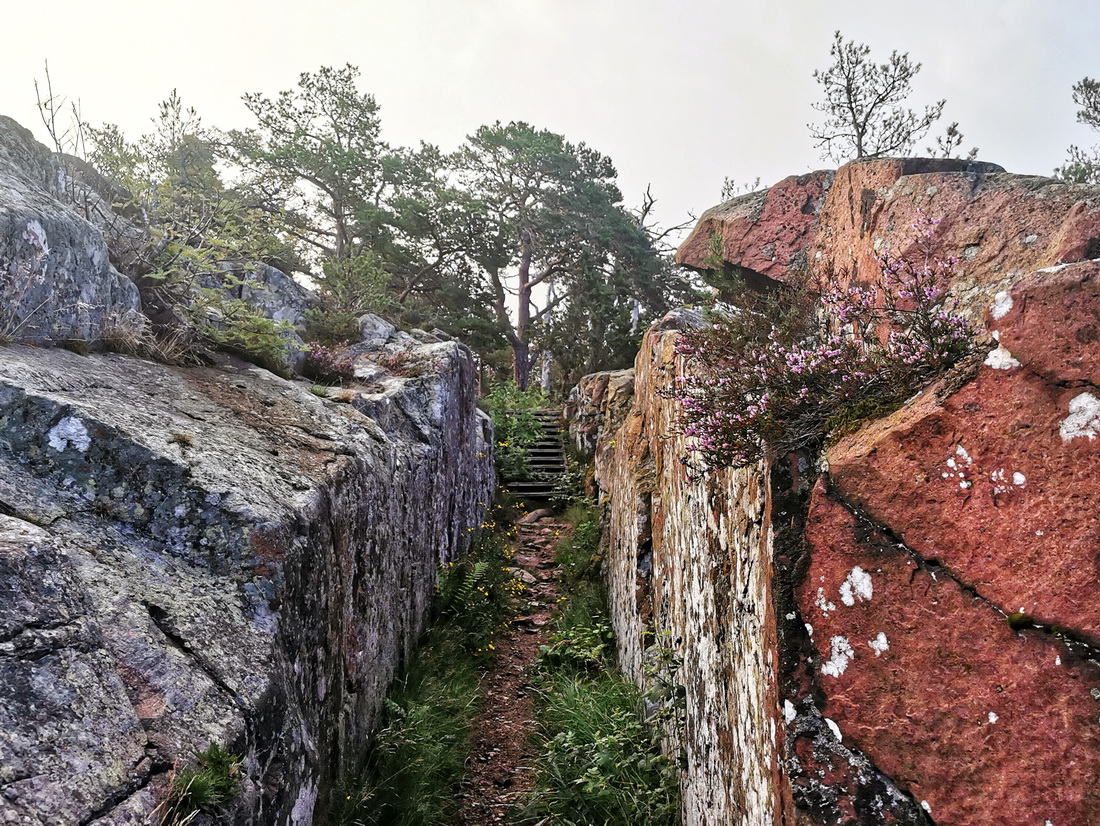
Just a couple of minutes, and you’re surrounded by pink rocks, pines, and history in Badhusparken——a park that was a hotspot for bathhouse-goers in the late 1800s.
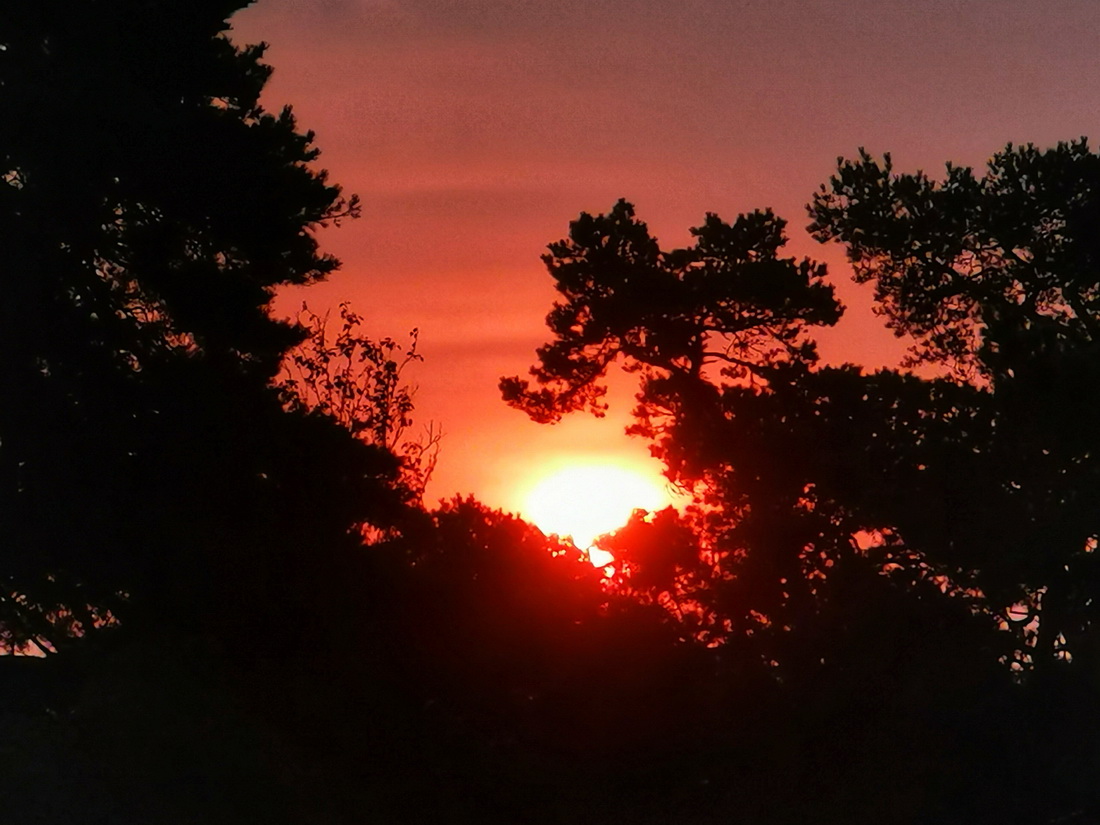
Sunrise in Badhusparken—worth waking up early to watch the first light paint the sky over Mariehamn.
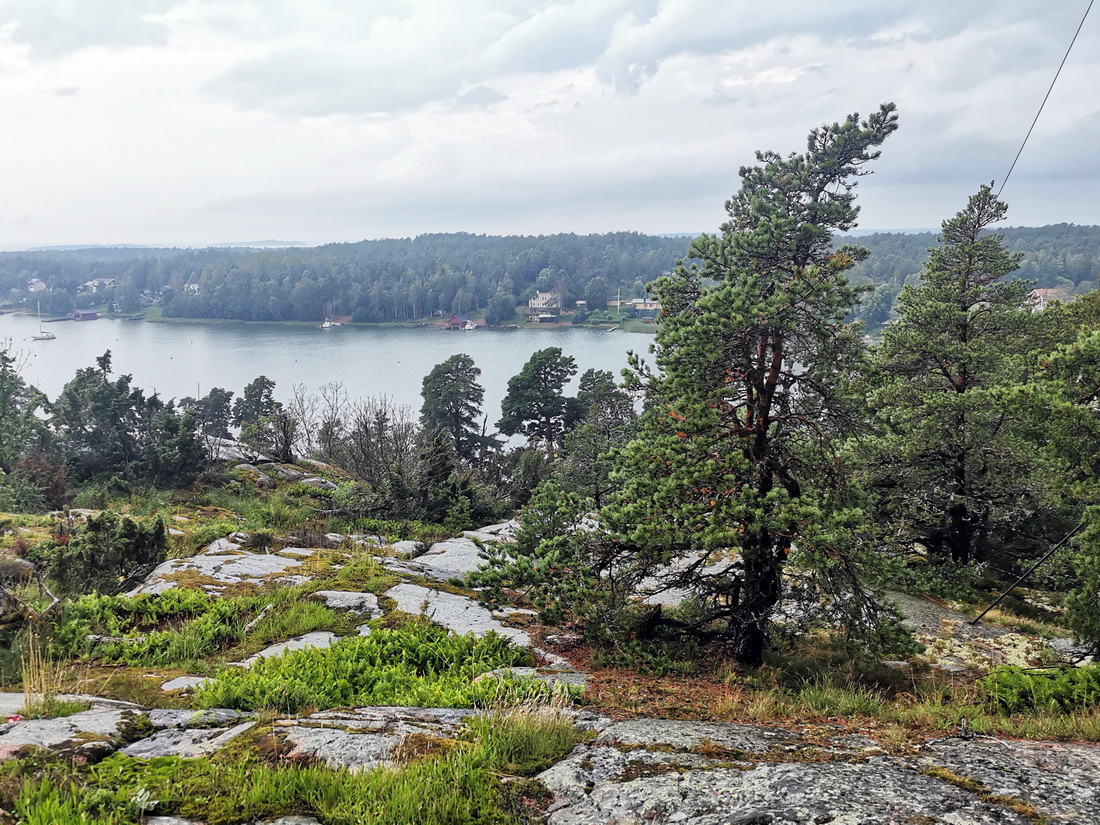
The view from Mariehamn Vaateplats—pure serenity with rocky shores and distant islands stretching out before you.
I arrived in Mariehamn on the early morning ferry from Tallinn, half-asleep but determined to start exploring. A 15-minute walk along the waterfront led me to Badhusparken, where I got lucky—the sunrise was absolutely breathtaking. One of those moments where you just stand there, forgetting about photos, just taking it all in.
The park itself is small but beautiful, with a short five-minute climb to Mariehamn Vaateplats, a rocky viewpoint wrapped in pines and heather. And trust me, the view is worth it. Easily the most stunning natural spot in town. I spent about an hour here, and before leaving Åland, I made sure to come back for one last look.
Badhusparken is right next to the sailing ship Pommern. I only admired it from the outside that morning (too early, everything was closed), but later, I came back and actually went aboard.
Åland Maritime Museum & Pommern
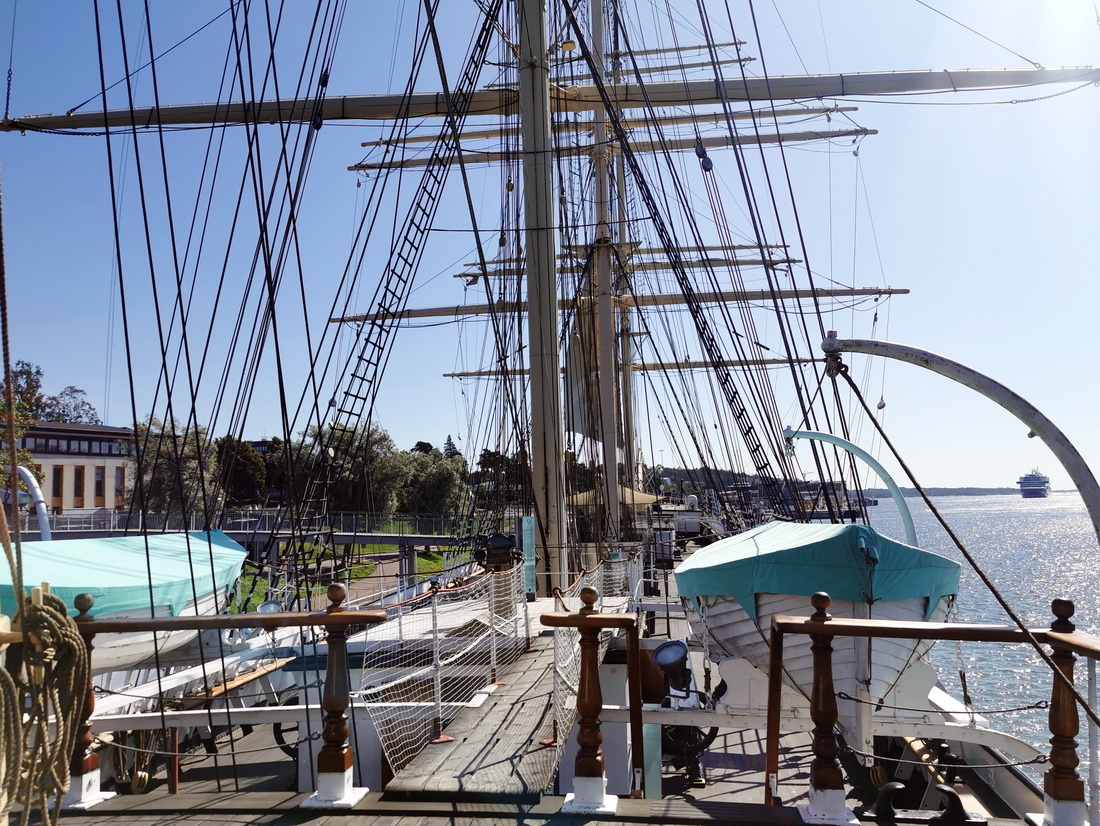
Pommern, a four-masted barque built in 1903 in Glasgow, Scotland, is known as the “lucky ship”. It survived both World Wars unscathed and lost only four crew members during its entire career.

Inside Pommern, the captain’s cabin feels surprisingly elegant for life at sea—though the low ceilings remind you it wasn’t all luxury.
If you visit just one museum in Åland, make it this one. The Åland Maritime Museum is all about merchant sailing ships, and trust me—even if you’re not big on maritime history, it’s hard not to get hooked. There are ship models, old navigational tools, and plenty of artefacts from Åland’s long seafaring past.
The best part? Pommern, a four-masted windjammer that once raced across the globe, carrying grain between Australia and England—until World War II put an end to its journeys. Walking its decks, you can almost hear the creaking of the wood and imagine what life was like on those endless ocean crossings.
Inside the museum, there’s plenty more to explore—captains’ logbooks, dramatic shipwreck stories, and a whole wall of ship figureheads staring down at you. Your ticket covers both the museum and the ship, and the audio guide (included in the price) takes you through the captain’s quarters, the galley, and the onboard workshops.
Need to drop your bags? There’s free luggage storage, plus a souvenir shop if you feel like taking home a piece of Åland’s maritime history.
Esplanade and St. Göran’s Church
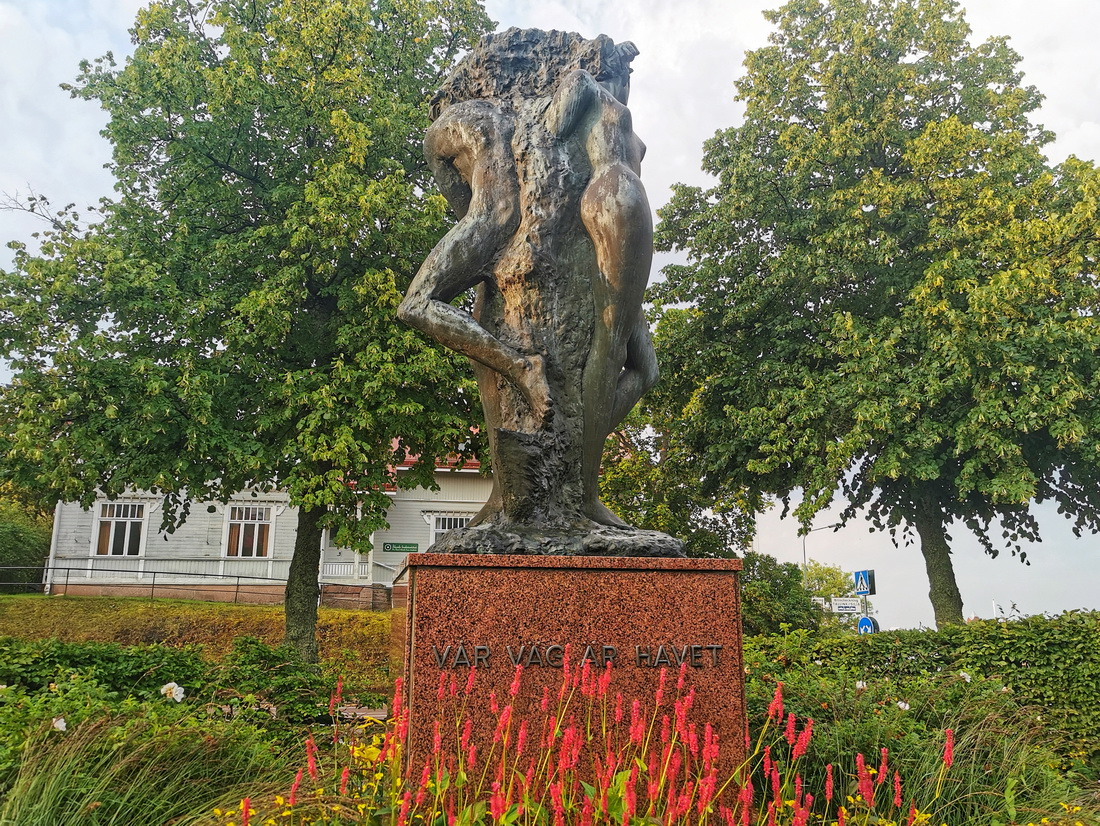
“Vi är Havets Folk” (“We Are the Sea People”) feels like a love letter to Åland’s seafaring roots, tucked away among flowers and trees.
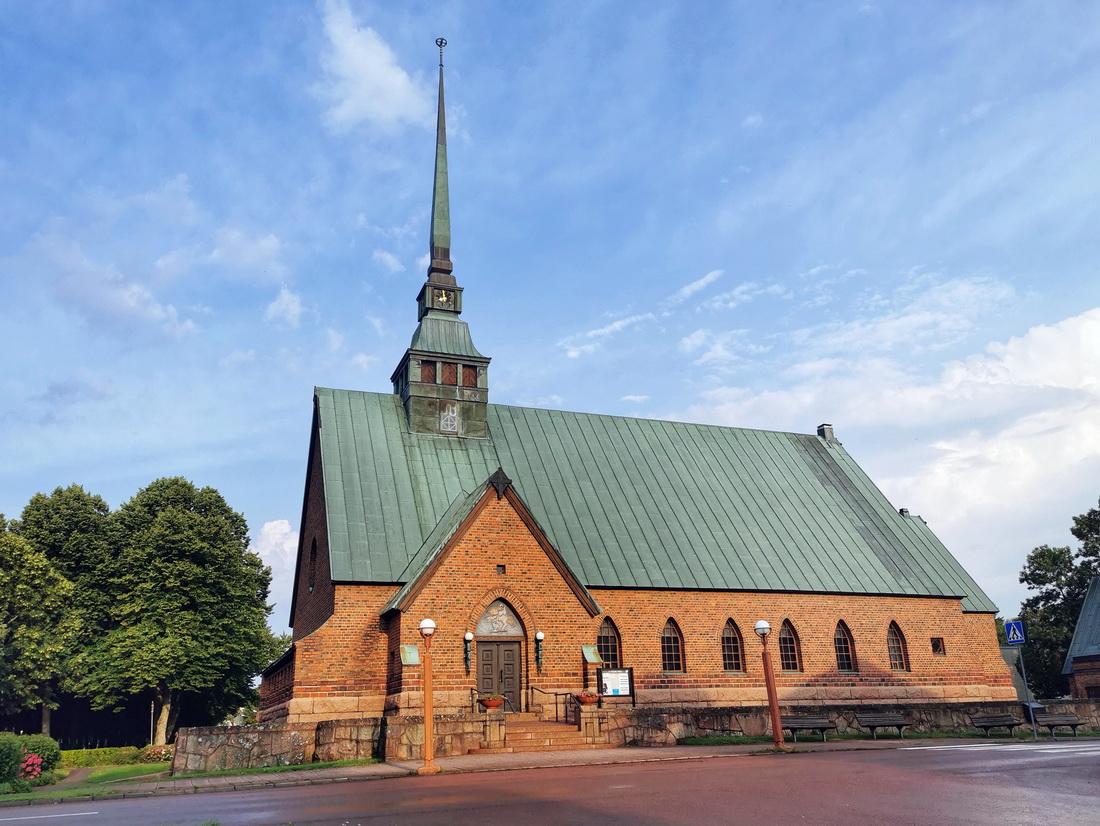
St. Göran’s Church doesn’t try to impress—it just quietly sits on the Esplanade, doing its thing for over a century.
The Esplanade cuts right through the city, a long alley lined with trees and wooden mansions that seem frozen in time. It’s not the kind of place you rush through—more like a spot to slow down, sit on a bench, and watch life quietly unfold.
Right in the middle stands St. Göran’s Church (S:t Görans kyrka), built about a century ago. It’s simple, nothing fancy, but catch it when the sunlight hits, and it feels like a little moment of magic.
Along the way, there’s also the sculpture Vi är Havets Folk (“We Are the Sea People”), a quiet nod to Åland’s connection with the sea. It doesn’t scream for attention, but if you know, you know.
Åland Museum (Ålands kulturhistoriska museum)
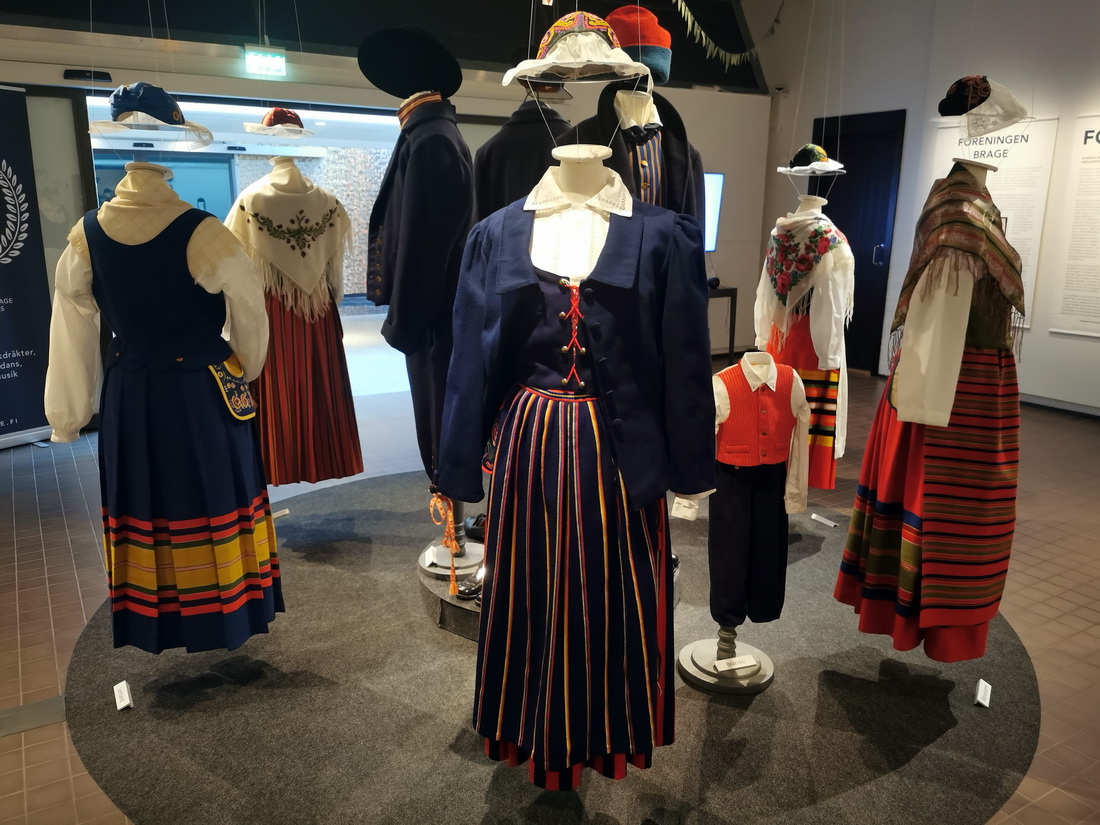
Striped wool skirts, crisp white blouses, and light woven shawls—Åland’s traditional outfits, both practical and elegant.
This museum is small but full of curious details. In the historical section, I found everything from prehistoric tools to old maps tracing Åland’s changing shape. The everyday objects were what really stood out—simple things that felt oddly personal, like they’d been plucked straight from someone’s life.
What drew me here, though, was the traditional clothing collection. It’s not big, but the hand-stitched patterns and fabrics pull you in, giving a sense of how people dressed for life on these windswept islands.
The art section feels quieter, almost meditative. There are landscapes of cliffs and sea, but also glimpses of daily life that make you pause and think.
It’s not a museum that tries to overwhelm you, and that’s the charm. You can wander through in no time, but the little details stay with you, lingering like a good conversation.
The Maritime Quarter (Sjökvarteret)
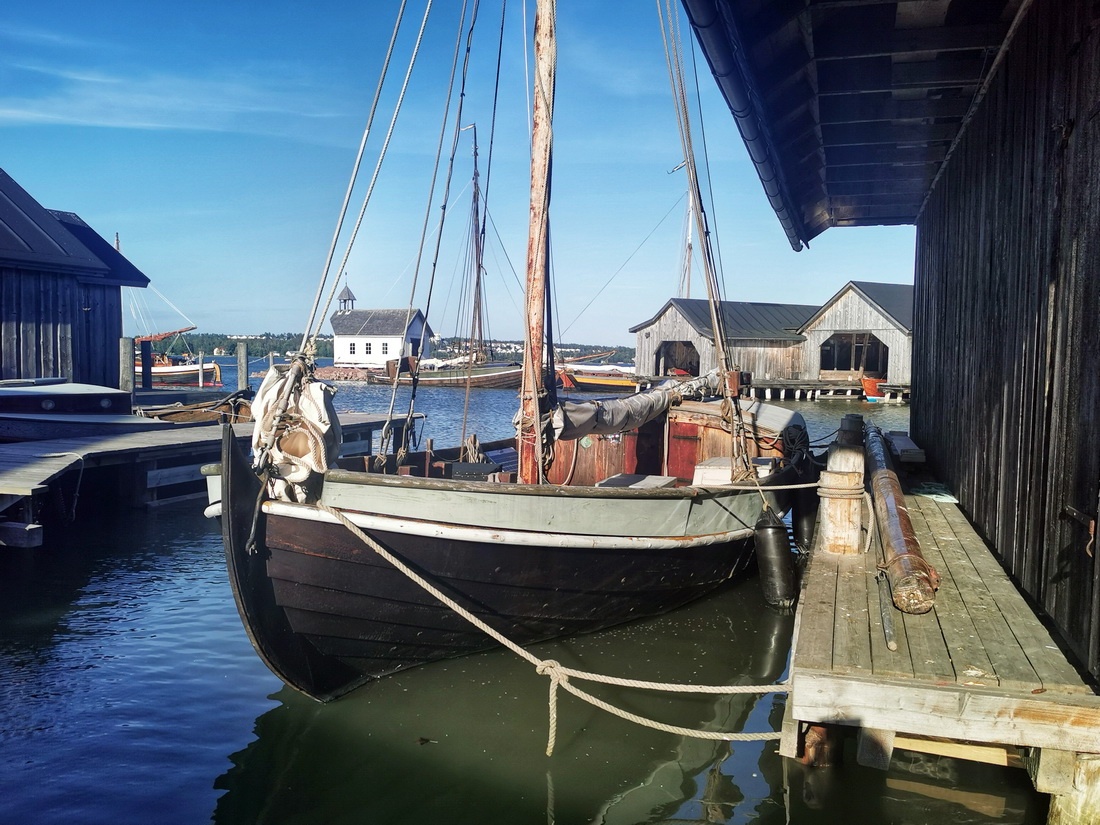
Boathouses are everywhere in Åland, but here they stand side by side, creating a little time capsule of maritime life.
The Maritime Quarter isn’t a polished tourist attraction—it’s a living, working shipyard where you can wander between old wooden boatsheds and see traditional boatbuilding in action. Some boats are freshly painted, others are worn by the sea, and if you stick around long enough, you’ll probably hear the sound of a hammer or the smell of fresh tar in the air.
There’s also a tiny sailors’ chapel, a quiet corner that somehow always looks great in photos. Small shops and workshops sell handmade crafts, from wooden carvings to maritime souvenirs. It’s the kind of place where you don’t come with a plan—you just walk around, take in the details, and see what catches your eye.
Bagarstugan Cafe & Wine
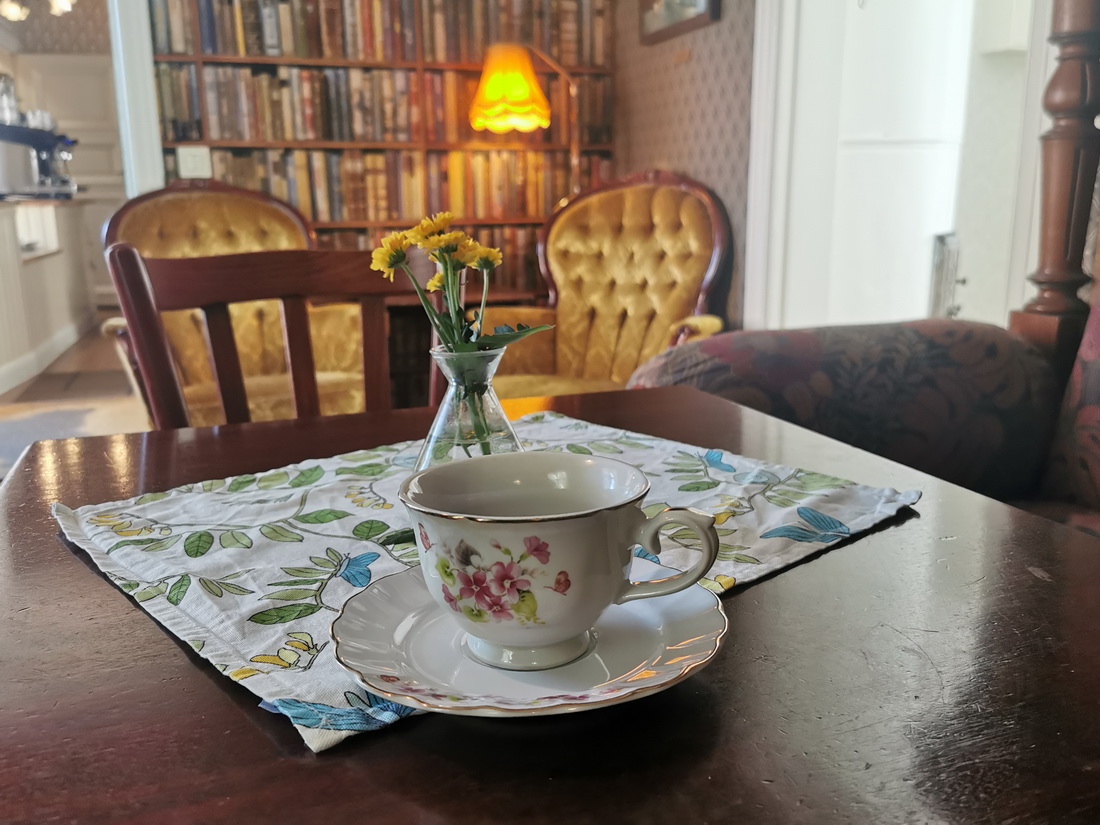
Stepping into this café feels like time travelling—vintage decor, antique cups, and a cosy atmosphere straight from another era.
This place feels more like stepping into someone’s living room than a café. Vintage interiors, antique cups, and the scent of fresh pastries make it almost a tiny museum of cosy. Åland pancakes, cakes, and homemade pastries dominate the menu, and if the weather’s nice, grab a seat in the courtyard.
A heads-up: it opens late and closes early, and there’s often a line at the register during the day. Also, don’t plan on coming Monday—it’s closed.
Black Cat Cafe (Svarta Katten)
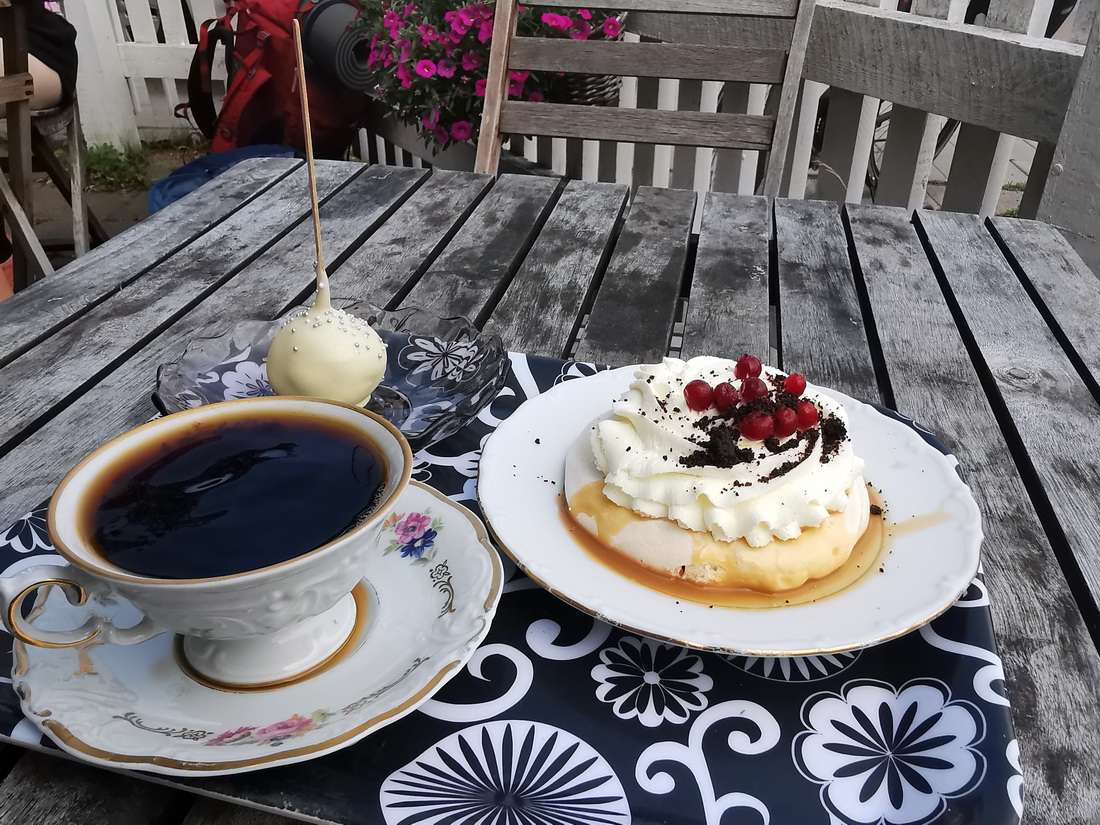
The desserts? Absolutely worth it. The coffee? The coffee? Let’s just say I like mine a bit stronger.
Another cosy café tucked inside a historic wooden house. Whether you sit indoors or in the garden, you’re in for a treat—literally. The menu is packed with desserts, pastries, and even gluten-free options.
And don’t ask me whether to pick Bagarstugan or Svarta Katten. I refuse to choose.
Stadshusbacken park
A tiny park right in front of the town hall—easy to miss, but a nice spot to take a break. There’s a monument to Russian Empress Maria Alexandrovna and another to Frans Peter von Knorring, a Finnish priest who played a big role in shaping Åland’s history.
But the real highlight? If you’re here in August, the flower beds steal the show. Roses and phlox bloom in every shade, turning this quiet corner into a mini floral paradise.
Mariehamn City Library
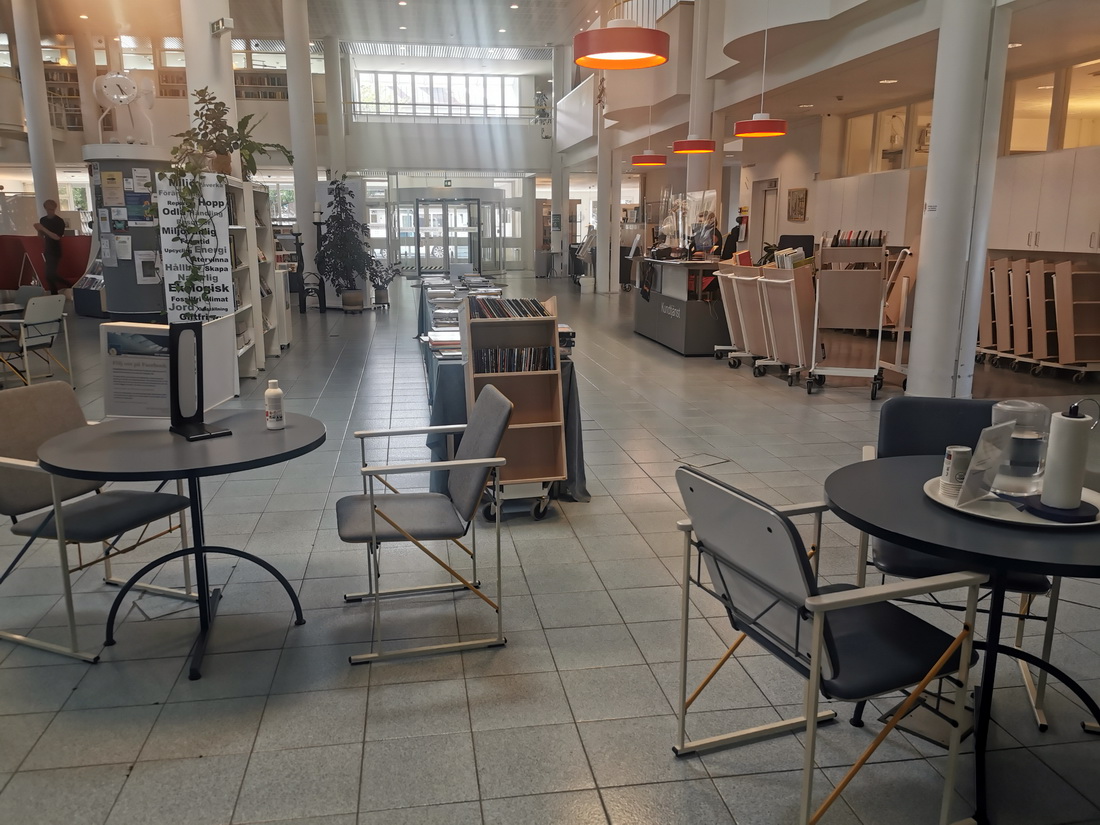
I spent half an hour at Mariehamn City Library, waiting for my island bus—and honestly, it wasn’t a bad way to pass the time.
Right across from the Bussplan terminal, this library is a surprisingly nice place to kill time while waiting for a bus. Plenty of quiet corners, books and magazines to flip through, free Wi-Fi, and—importantly—a restroom that won’t cost you a cent. Feels more like a cosy reading nook than a typical library.
Badhuset Mariebad (Water park)
A pool with jacuzzis, saunas, and a small indoor winding slide—but the real highlight? You can swim straight into the sea from here. I’ve been to fancier water parks, but this one has its own charm. Something about the mix of warm pools and cold open water just sticks with you.
Where to Visit from Mariehamn
Mariehamn might be small, but it’s a great jumping-off point for exploring the rest of Åland. You can hop on a bus or drive to different parts of the main island—or take a ferry to one of the smaller, more remote islands like Kökar, Källskär, or Sottunga. Each place has its own vibe, from windswept landscapes to hidden harbours. The only challenge? Figuring out where to go first.
Kastelholm, 23 km from Mariehamn
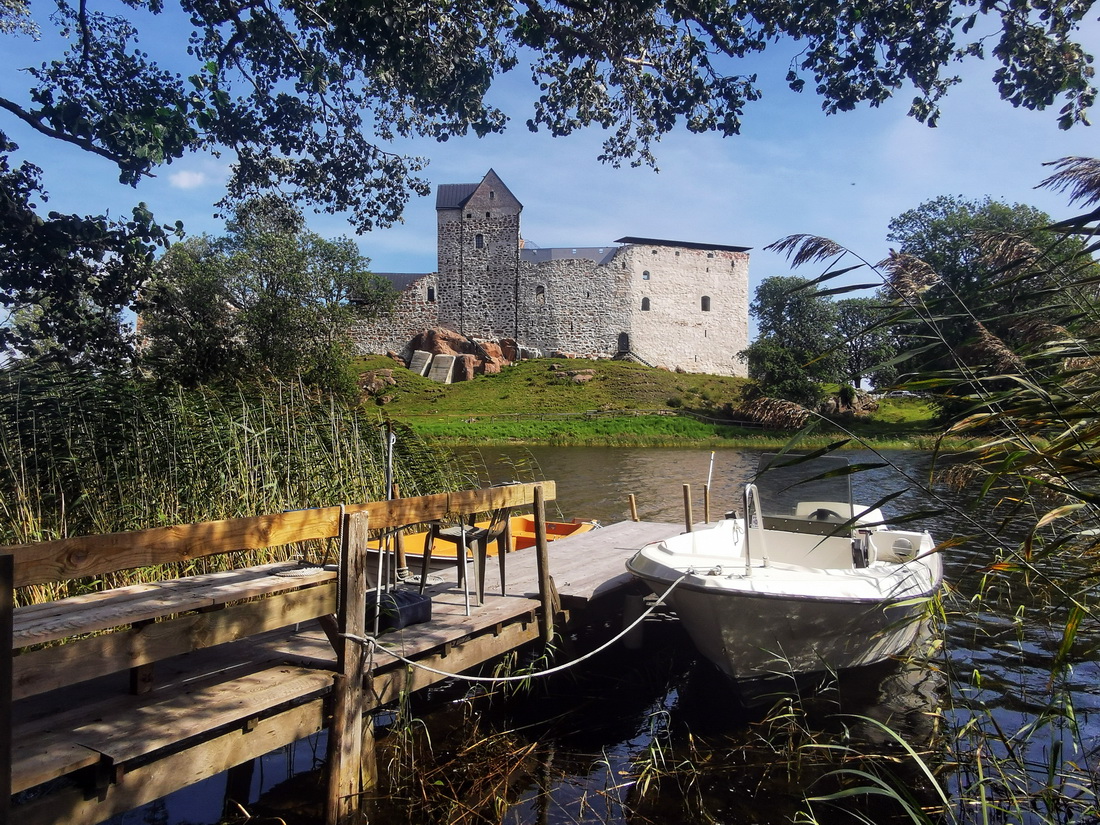
Kastelholm sits by the river in a picture-perfect spot—exactly the kind of place you’d expect a medieval castle to stand.
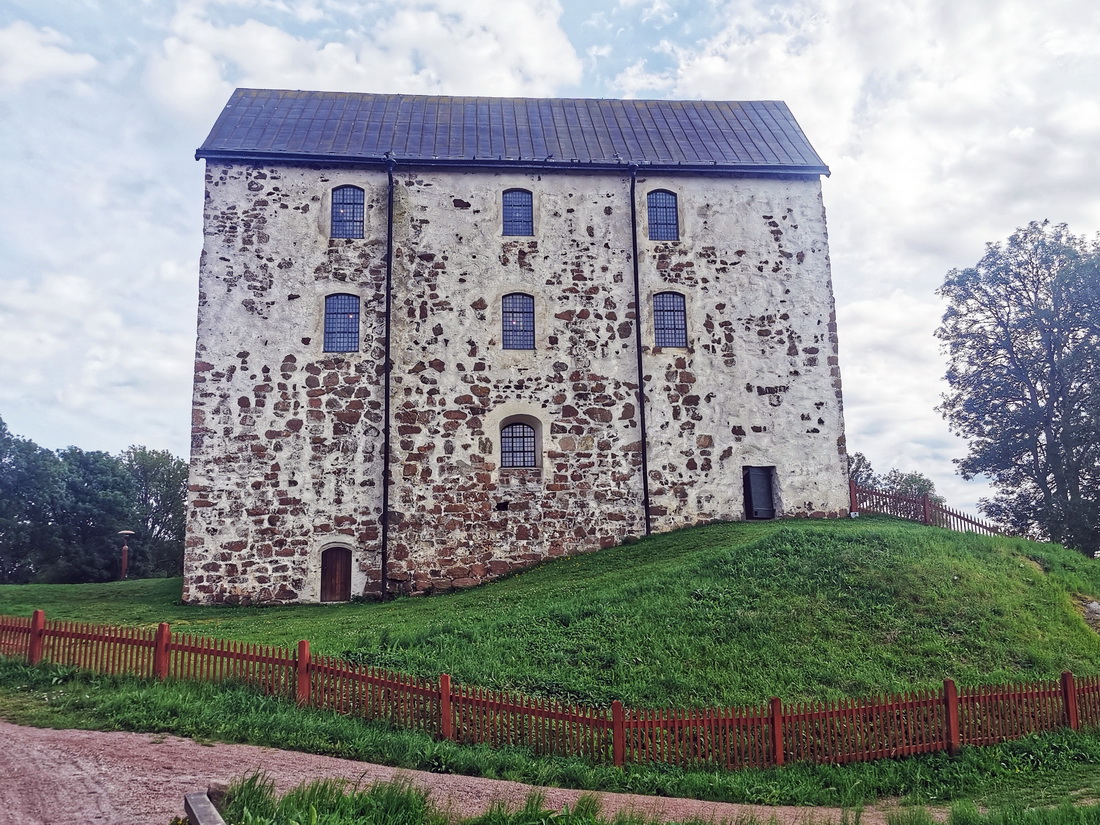
The castle was at its peak in the 15th and 16th centuries, back when this quiet place was anything but.
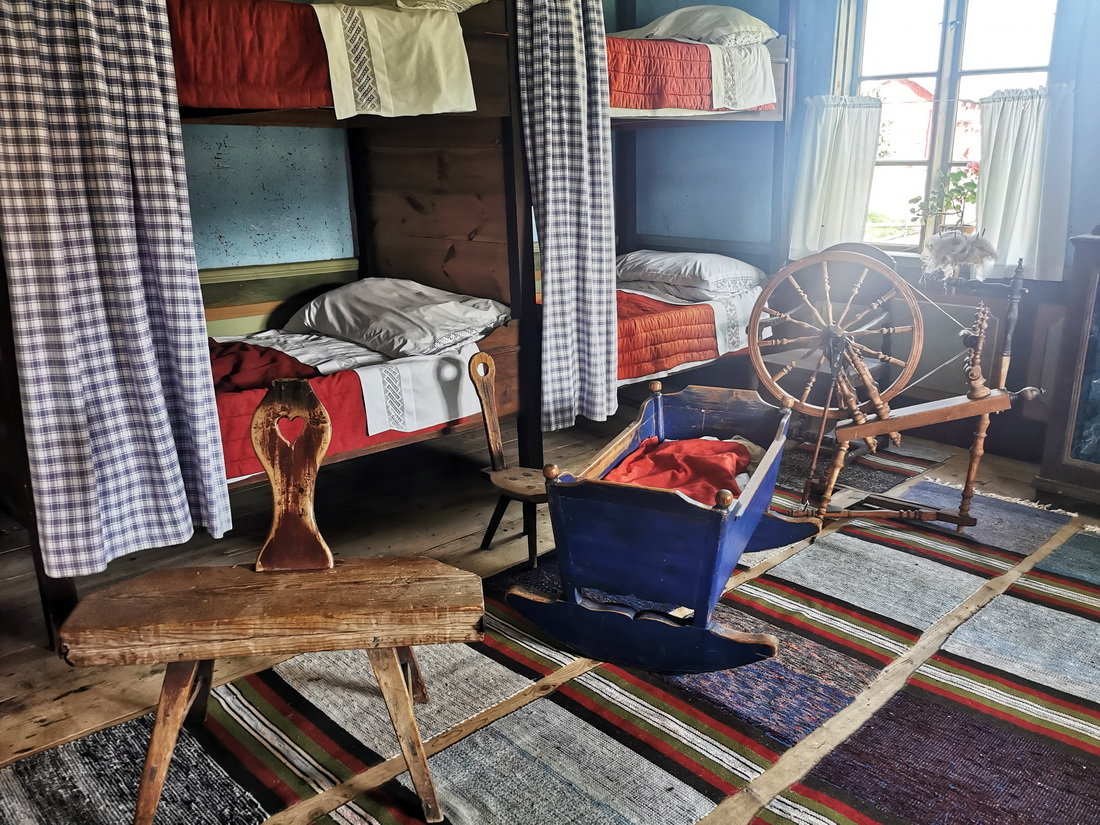
Walking through these old farmhouses feels like stepping into someone else’s life, just centuries too late.
From Mariehamn, you can travel by bus or car to different parts of the island or by ferry to other separate islands: Kökar, Källskär, Sottunga, etc.
Kastelholm is all about a medieval castle and an open-air museum—both within walking distance of each other, making it an easy and interesting trip. I spent five hours wandering around, but if you’re short on time, two hours is enough to get a feel for the place.
Getting there was simple: bus 4 from Mariehamn (2 euros, barely anyone on board), and it drops you right by the castle. The exhibition inside is small but gives you a good sense of the history. If you want to see the royal prison, you can grab a combo ticket at the entrance—but honestly, it’s tiny, so no pressure. Just walking around the castle and taking in the views is worth it.
100 meters away, the Jan Karlsgården Open-Air Museum is like stepping into an Åland village from the past. Old farmhouses, windmills, barns—some open, some just for show, but the whole place has a quiet charm. It’s free, which is always a bonus.
A few random things worth knowing:
- The info centre sells postcards and stamps.
- If you want a castle stamp, just ask at the info centre—they have a stamp pad so you can mark your notebook or postcard.
- The nearby Kastelholms Gästhem gets good reviews and is open May–October.
On the way back, my bus was 15 minutes late, which added a bit of unnecessary suspense—but at least it wasn’t the last one of the day.
The Island of Kökar, 60 km from Mariehamn
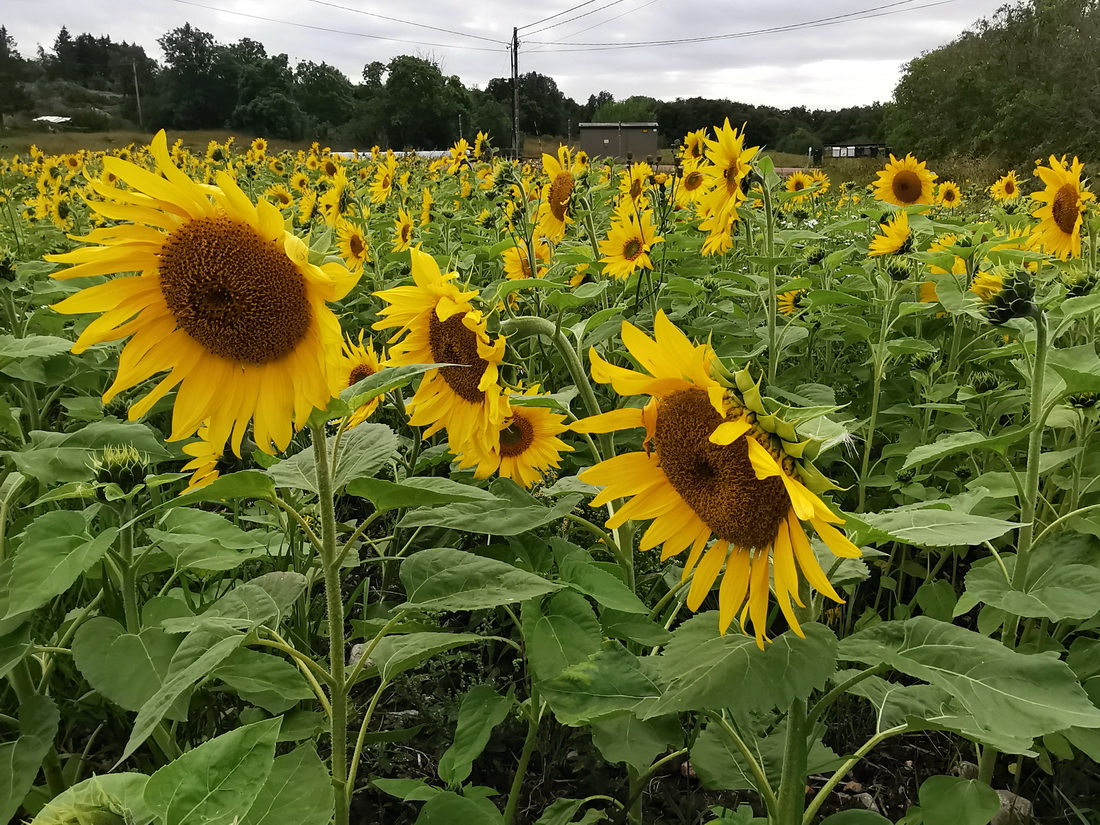
Somewhere along the way, I stumbled upon sunflower fields—totally unexpected, but a beautiful surprise.
I didn’t expect to fall for Kökar, but here I am, back for the second time. A windswept rock in the middle of the sea doesn’t sound like the easiest place to live, but locals wouldn’t trade it for anything. They’ve made sure trees grow where there were none, and somehow, despite the harsh conditions, even strawberries and sunflowers thrive.
Kökar isn’t big—just 15 kilometers from end to end—but it never feels too small. About 220 people live here year-round, and even when that number doubles in summer, the island still feels peaceful. A few artists have settled here too, drawn by the endless sea, sky, and solitude.
But really, what counts as a sight on these islands? Here, every step feels interesting. Sometimes, you might pick up a postage stamp featuring a red boathouse (Åland has its own stamps, not Finnish ones, and they’re pretty amazing), only for the owner of your guesthouse to casually mention, “Oh, that’s my grandfather’s! You can still see it today.”
I spent over two weeks on the island—swimming in cold coves (which locals call “refreshing”), hopping on ferries to even tinier islands, picking up supplies from the only shop, and chatting with people who know every stone and wave. They also know exactly how long you’ve been here. (“Still on Kökar? You must really like it!”)
How to Get to Kökar
There are two ways to get to Kökar, and the ferry is completely free for everyone. It is operated by Ålandstrafiken, and you can check the latest schedule on their official website.
- From Långnäs on Åland (20 km from Mariehamn). I took a bus from Mariehamn’s Bussplan (right across from the city library) and arrived at the Långnäs ferry terminal just five minutes before departure—not nearly as stressful as it sounds. The ferry ride takes about 2.5 hours.
- From Galtby on mainland Finland. Galtby is a small harbour in the Turku Archipelago, about 80 km from Turku. The journey there includes a scenic drive with a few short ferry crossings between islands. From Galtby, the ferry to Kökar takes about 2.5 hours.
The ferry ride itself is part of the charm. It zigzags through tiny islands, pausing just long enough for locals to hop off with their groceries, load up their boats, and vanish into the sea like it’s the most normal thing in the world.
There are a few guesthouses and hotels scattered across the island, some with small bistros or restaurants.
Brudhäll Hotel & Restaurant is one of the most comfortable places to stay. Some rooms have mini-kitchens, others come with private saunas, and the views stretch out over cliffs and sea. It’s about 4 km from the ferry pier.
But Brudhäll isn’t the only option. There are a few other guesthouses tucked around the island, all with their own charm and that unmistakable Kökar atmosphere.
Where to Stay on Kökar
There are a few guesthouses and hotels scattered across Kökar, some with small bistros or restaurants. The main thing is to book in advance—by peak season, only the most expensive options remain.
Brudhäll Hotel & Restaurant is one of the most comfortable places to stay. Some rooms have mini-kitchens, others come with private saunas, and the views stretch out over cliffs and sea. It’s about 4 km from the ferry pier. This is where many sailors stop for the night—I even met visitors from the U.S. tracing their Åland roots.
But Brudhäll isn’t the only option. There are several wonderful guesthouses tucked around the island, each with its own charm and that unmistakable Kökar atmosphere. Some sit right by the water, perfect for a morning swim, and at night, you’ll fall asleep to the sound of real waves—no need for a white noise app.
Village of Karlby

Prices at the Kökar supermarket are high, but when it’s the only store on the island, you take what you can get.
Karlby is the heart of the island—not just because it has a shop, a school, and a post office, but because this is where people from all over Kökar come to stock up on groceries, grab a bite, and catch up on the latest news. Right next to the supermarket is a small bistro where locals linger over coffee and bowls of rich, slightly spicy fish soup. It’s the kind of place where no one is in a hurry—except maybe the tourists who haven’t adjusted to island time yet.
Across the road, a rocky hill rises up—because what else would it be? This is Kökar, after all, an island made of wind-polished stone. Every summer, people gather here to raise the traditional maypole and celebrate Midsummer. There’s food, music, and a sense that, for a moment, the whole island is in one place.
The village itself is just a handful of red wooden houses, a school, a library, and everything else you need when the next town is a ferry ride away. And sometimes, Karlby surprises you.
Tucked away in the village is a small ceramic studio, open whenever the owner is around. She lives in Mariehamn now, but Kökar is in her bones—she grew up here, and every weekend, she comes back. If you’re lucky, you’ll catch her working, shaping pieces that aren’t made for mass production but by instinct, by memory, by mood. You might come in to browse and leave deep in a conversation about ceramics, or childhood, or what it means to always return to the same island in the middle of the Baltic.
That’s Karlby—small, quiet, but full of stories if you slow down enough to listen.
Kökar Church
The church of St. Anne, built in 1784, is one of the most beautiful in the Åland Archipelago. Its location right by the shore is simply stunning—from the rocky outcrop, you get sweeping views of countless small islands stretching into the distance.
If the church is open, step inside and look up—you’ll see a model ship hanging from the ceiling, a classic feature in Scandinavian churches.
As you approach along the road, cross the bridge to Hamnö Island, and then watch for a left turn onto Gamla kyrkvägen, the ‘Old Church Road. This scenic trail is about 1 km long and mostly made up of large stones, but it’s well-marked and not difficult. If you have time, take it—it’s the perfect way to arrive at the church on foot. But if you’re in a hurry, just stay on the main road.
Kökar Local Heritage Museum
Kökar Museum offers a glimpse into island life from the 19th century to the 1940s. The building itself, an old school from 1913, still has its original charm—including the school toilet, because apparently, everything deserves a spot in history.
Bring cash for tickets—credit cards are useless here. The museum doesn’t have a website, but you can stalk its Facebook page for updates. Check the opening hours before heading out, especially if you’re walking. The route isn’t exactly a scenic highlight, and arriving to find the doors locked wouldn’t be the best reward. I spent about an hour here—small, but full of little details that make you pause.
Bronze Age Site
Kökar has a Bronze Age site dating back to 1150–1050 BC. If you’re expecting dramatic ruins, you might be a little underwhelmed, but the trail itself is worth it. Walking through this landscape, it’s easy to imagine ancient hunters living here thousands of years ago. Maybe they also stopped to admire the blooming heather covering the island in purple—or maybe they were too busy worrying about food, warmth, and not getting eaten by something bigger.
And while we’re on the topic of survival, a quick note: there are adders on the island. They’re not aggressive, but they do exist. Just walk with a bit of enthusiasm (they sense vibrations and will disappear before you even see them). Plus, most of the trail runs over stones, so your odds of stepping on one are pretty low.
Trips from Kökar
Kökar isn’t just one island—it’s part of a whole world of tiny, windswept isles. Some are easy to visit, and trust me, they’re worth it.
Källskär Island
This tiny island blew me away. Highly recommend! First, the nature—if Källskär were just rocks and trees, it would still be worth the trip. The way the landscape has been shaped by time, wind, and water feels almost too perfect, like nature showing off.
Then, there’s the Swedish Baron Göran Åkerhielm, who decided this was the place to build his dream summer retreat. He wasn’t just some hermit hiding from the world—he hosted artists, writers, and businessmen, turning Källskär into a kind of creative hideaway. And when age caught up with him, he did the most Swedish thing ever—handed the whole place over to the Åland region so others could enjoy it. Thanks to his stone walls, rhododendrons, roses, and even strawberries somehow survive here, despite the relentless winds.
And then there’s the Moomintroll’s House—well, almost. On a hill, there’s a tiny gazebo with a spire that inspired Tove Jansson when she visited, leading to the design of Moomintroll’s home. You can’t go inside, but you can peek through the windows and imagine the Moomins hanging out.
Now, here’s the catch—there’s no regular ferry to Källskär. You’ll need to book a tour through Brudhäll Hotel & Restaurant. Just email them in advance to reserve a spot. The trip costs €45, lasts about 4 hours, and includes the boat ride. If the weather turns stormy, trips get cancelled, but that’s pretty rare. The guide switches between Swedish and English, depending on the group—I got an English tour, which was a nice bonus.
Sottunga Island
About 100 people live on this island, making it one of the smallest municipalities in Finland. The sights? Well, there’s a charming wooden church near the harbour, a short nature trail, and, of course, the harbour itself with its little restaurant, toilet, and information stand. But really, what counts as a sight on these islands? Here, every step feels interesting.
I spent a couple of hours on Sottunga between ferries—plenty of time to see everything, since the main spots are all close to the harbour. You could easily come here just for lunch. Why not? Here in the islands, life follows a different rhythm. Elsewhere, you might be choosing between hundreds of restaurants, but here, going out to eat feels more like an event—like going to the theatre, except you’re taking a ferry and maybe even wearing your best jeans.
You can get here on the free Southern Line ferries between Långnäs and Kökar.
I had planned to visit two more tiny islands—just nature, no major landmarks—but a strong storm and heavy rain in the first few days threw my plans off track. So, if you’re short on time, I’d recommend prioritizing a visit to Källskär instead.
A Few Final Thoughts on the Åland Islands
The Åland Islands don’t ask much of you. No big plans, no ticking off sights. Just show up — and notice what’s around you. The quiet between ferry horns. The soft red of weathered wooden houses. A fox darting across a field at dusk.
They’re small islands, yes. But somehow, there’s room for everything — birdsong, sea air, time to think.
And that’s what I love most. You don’t visit the Åland Islands to be entertained. You come to let your thoughts settle, your pace slow, and your shoulders drop a little. Not everyone needs that. But if you do — you’ll know.
